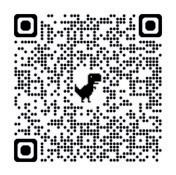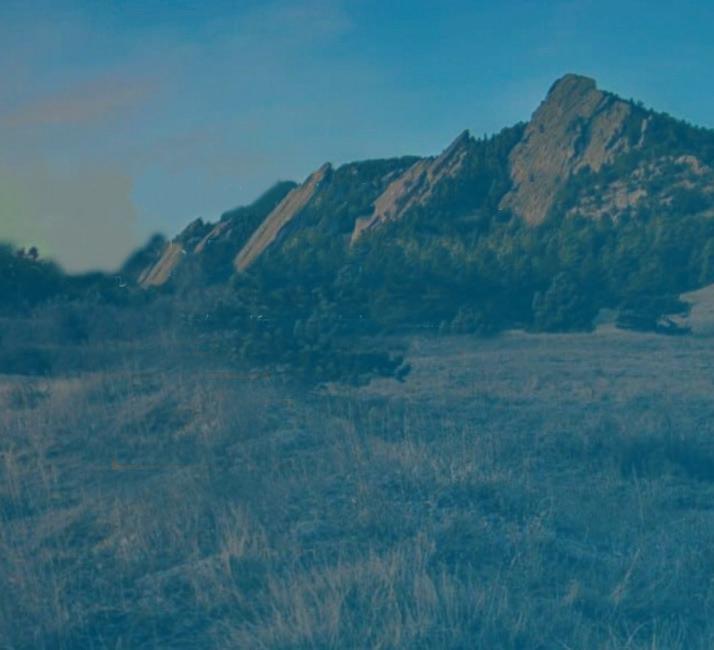





























































































































































































J. GRAY















































































































































































































J. GRAY

















BY JENN OCHS
You might have been wondering where I’ve been and what happened that kept me from writing this monthly disability column. It all started with a bad case of COVID.
I’ve had COVID before, but this time I suffered from body aches, fever and horrible coughing. I had to isolate myself, so I just laid in bed, miserable for days.
As the typical COVID symptoms went away, I was left very depressed. I eventually became suicidal. My family had experienced a couple of suicides, so they didn’t wait to take me to the emergency room at Boulder Medical Center.
I was put on a 72-hour suicidal hold and transferred to an acute unit meant to stabilize mental illness. Unfortunately, the unit was not good for me. I only felt even more isolated. I referred to the unit as a prison when my cousin visited me. I was kept at the acute care unit over the weekend and was released without any treatment or improvement.
My mom took it upon herself to save her daughter. She got me an emergency appointment with my primary care provider, who told us that doctors have seen
JANUARY 2, 2025
Volume 32, Number 20
PUBLISHER: Stewart Sallo
PUBLISHING CONSULTANT: Francis J. Zankowski
EDITORIAL
EDITOR-IN-CHIEF: Shay Castle
ARTS EDITOR: Jezy J. Gray
REPORTERS: Kaylee Harter, Tyler Hickman FOOD EDITOR: John Lehndorff
CONTRIBUTING WRITERS: Rob Brezsny, Michael J. Casey, Amy Maxem, Mark R. Wood, Jenn Ochs, Dan Savage, Joseph P. Schacht, Toni Tresca, Gabby Vermeire
MARKET DEVELOPMENT MANAGER: Kellie Robinson
SENIOR ACCOUNT EXECUTIVE: Matthew Fischer
ACCOUNT EXECUTIVES: Chris Allred, Tony Camarda, Austen Lopp
SPECIAL PROJECTS MANAGER: Carter Ferryman
MRS. BOULDER WEEKLY: Mari Nevar
CREATIVE DIRECTOR: Erik Wogen
GRAPHIC DESIGNER: Chris Sawyer
CIRCULATION
CIRCULATION MANAGER: Cal Winn
CIRCULATION TEAM: Sue Butcher, Ken Rott, Chris Bauer
BUSINESS OFFICE
BOOKKEEPER: Austen Lopp
FOUNDER / CEO: Stewart Sallo
that COVID can cause inflammation of the brain, which must have triggered and heightened my depression.
I was prescribed an antidepressant and a sleeping aid. Mom then started me with a therapist.
The combination of drugs and therapy would take at least a few weeks to kick in. My mom and I struggled with my negative thoughts and constant desire to sleep. I was a mess and couldn’t sleep even though I was desperately tired. Eventually, my mood started to improve, and I began to get back to things I used to do. Before my mental episode, I was always on Zoom meetings working on disability advocacy. I was also active with adaptive sports. When my depression took over, I wasn’t
As Boulder County’s only independently owned newspaper, Boulder Weekly is dedicated to illuminating truth, advancing justice and protecting the First Amendment through ethical, no-holds-barred journalism and thought-provoking opinion writing. Free every Thursday since 1993, the Weekly also offers the county’s most comprehensive arts and entertainment coverage. Read the print version, or visit boulderweekly.com. Boulder Weekly does not accept unsolicited editorial submissions. If you’re interested in writing for the paper, please send queries to: editorial@ boulderweekly.com. Any materials sent to Boulder Weekly become the property of the newspaper.
1495 Canyon Boulevard, Suite CO 1, Boulder, CO 80302 Phone: 303.494.5511, FAX: 303.494.2585 editorial@boulderweekly.com www.boulderweekly.com
Boulder Weekly is published every Thursday. No portion may be reproduced in any form without written permission from the publisher. ©2025 Boulder Weekly, Inc., all rights reserved.
Boulder Weekly welcomes your correspondence via email (letters@boulderweekly.com). Preference will be given to short letters (under 300 words) that deal with recent stories or local issues, and letters may be edited for style, length and libel. Letters should include your name, address and telephone number for verification. We do not publish anonymous letters or those signed with pseudonyms. Letters become the property of Boulder Weekly and will be published on our website.

BY MARK R. WOOD
In 2021, 1.1 million e-bikes were sold in the U.S. — almost four times the number sold in 2019. This increase in new e-bike riders will add additional traffic to trails that are already overcrowded with pedestrians and cyclists.
Most bike and multi-use paths in Colorado are eight feet wide and were not designed for motorized traffic that goes 20-plus miles per hour. The injury tsunami is coming.
E-bike related head injuries have increased 49x in five years, the American College of Surgeons reported. There’s been a significant increase in traumatic brain injuries, especially for kids who are not wearing helmets.
A cargo e-bike — loaded with a parent, kids and gear — weighs around 200-275 lbs. Traveling at 28 mph, this vehicle can create significant injuries when they collide with unsuspecting pedestrians or cyclists. I was almost a victim of one of those crashes.
sion to use their e-bikes on roads and paths. The safety classes could be taught in person at schools on weekends to engage the students (and seniors) by physically showing them what safe riding looks like.
Asking kids to watch a video to learn e-bike safety has not been effective. This class would certify that young riders — who don’t have a driver’s ed course to teach things like awareness and rules of the road/path — have been provided with the basics of safety and rules pertaining to e-biking in our communities. Parents would be thrilled, and kids would receive clear guidance for what are acceptable and unacceptable behaviors.
Adults can model these safe behaviors to help kids, who learn by seeing and doing, by using hand signals and bells regularly. Experience dictates that we need to communicate safety messages in a way that the users want to consume that information; and then ask them to share that message with their friends and others.
Crashes and near misses between e-bikes, bicycles, scooters, unicycles and pedestrians are increasing daily, according to the American College of Surgeons’ report — and those are only the reported cases. It is possible that the reported number of incidents and crashes are a fraction of the total amount that actually occur.
We all share the same multi-use paths. All communities in the Front Range have a responsibility to act now to prevent more e-bike related crashes, especially for our future generations.
showering or answering my calls, texts or emails. All I wanted to do was stay in bed. My behavior was scaring my friends and family.
I had this obsession with drinking cold water. I haven’t been able to swallow for 10 years, so it didn’t make sense for me to want to drink. I also seemed to grieve over the fact that I couldn’t walk, something I have processed over the past decade.
After about two months, I’m now much better and have a therapist I like. I have hope that I’m coming out of this nightmare.
I’m sharing this because mental health is not talked about enough. I also want people to know COVID can easily cause other medical issues.
Some refer to this as long COVID. I believe my long COVID was a result of isolation. I became used to staying in bed. Then it turned colder and, thanks to Daylight Savings Time, it got darker earlier. This combination made me want to stay wrapped in my covers.
I believe this happens to a lot of people, and I want them to know they are not alone. Let’s normalize making mental health a priority. Legitimize seeking help and remove the shame of needing help.
Jenn Ochs lives in Boulder and enjoys listening to music, podcasts and audiobooks while painting or drawing. She is a disability rights advocate and a graduate from Baylor University in Texas, which is where she realized that Boulder is the best place to live.
There is an urgent need to improve the safety signage and education to help prevent this trend from growing rapidly. We need to add better signage with speed limits and safety reminders to guide safe use of the multi-use paths we all share together.
It has become an annoying trend to see youngsters riding three to a bike on the path with no helmets, going 20 mph without pedaling. Helmet use is infrequent with youngsters and needs to be consistently reinforced by parents and signage.
Safety etiquette common to most cyclists — like announcing “on your left” or ringing a bell when approaching others from behind — are good examples of ways to communicate your intentions to others to help prevent near misses.
Industry experts suggest the need for a required class for young and new riders before granting permis-
Mark Wood is an avid cyclist and e-biker, volunteer and marketing contractor for Community Cycles, and member of Commuting Solutions and Boulder Chamber Transportation Connection. Wood started an e-bike safety awareness program, ebikesafetyadvocates.com, after three near misses with cargo e-bikes on Boulder trails in 2023.

BY SHAY CASTLE
Katrina Dreamer is tired. Tired of asking friends, family, even her doctor, to wear a mask.
“My doctor refused to wear a mask for me,” they said. “Like, my doctor. How am I even saying that sentence?”
Few Americans are still masking, and most believe we are in a post-pandemic era. Not Dreamer — or the small contingent of Coloradans who bill themselves as COVID-cautious, or COVID-informed. They are individuals who have stepped into the role our governments once played, distributing protective equipment and warning the public of a rise in cases. It’s no easy task.
“The early days of the pandemic were really hard for everybody, and I can understand the tendency to not want to look at that anymore,” Dreamer said. “But there are millions of people who can’t avoid it.
“Immunocompromised, chronically ill, disabled people are everywhere. I’m there; I need people to do what they can to protect me.”
In 2024, 44,620 people died from COVID in the U.S., according to Centers for Disease Control (CDC) data through Dec. 7. There were two waves of 1,000-plus deaths per week — the January peak topped 2,500.
That’s a fraction of the all-time high in early 2021. A decline in cases and the eroding government support for testing, tracking and masking has led to a worrisome complacency among the public, Dreamer said.
President Joe Biden “declared the public health emergency over in 2023,” they said, “but not the pandemic.”
Test positivity — an indicator of how much the virus is circulating among a population — remains over 5%. During the height of the pandemic, health officials considered a 5% positivity rate too high for lifting government restrictions.
To “counter the failure of public health,” Dreamer and four others organized themselves into Covid Safe Colorado (CSC), the state’s only mask bloc — mutual aid groups that provide protective equipment, tests and information to their communities for free. There are dozens across the U.S., but blocs are scarce in the Rocky Mountain region.
CSC has distributed 26,000 masks and 3,000 rapid tests throughout the state. They also try to counter misinformation and malaise among the general public.

“With that push to get back to normal, it has become very individualistic, ‘you-do-you,’ assess your own risk approach to the pandemic,” said activist Anna Estes. That is “very dangerous” for people who are more vulnerable to COVID.
According to a 2022 metastudy of COVID transmission, 44% of cases spread asymptomatically.
“The messaging is that if you’re vaxxed, you’re fine,” Dreamer said. “But you may be walking around and giving it to somebody like me who will be extremely affected by it.”
To Estes, masking is a disability rights issue and a social justice issue. She attended a few CSC events and then, using her own money, funded a mask drop in downtown Boulder. The handmade pamphlets that accompanied them included information about

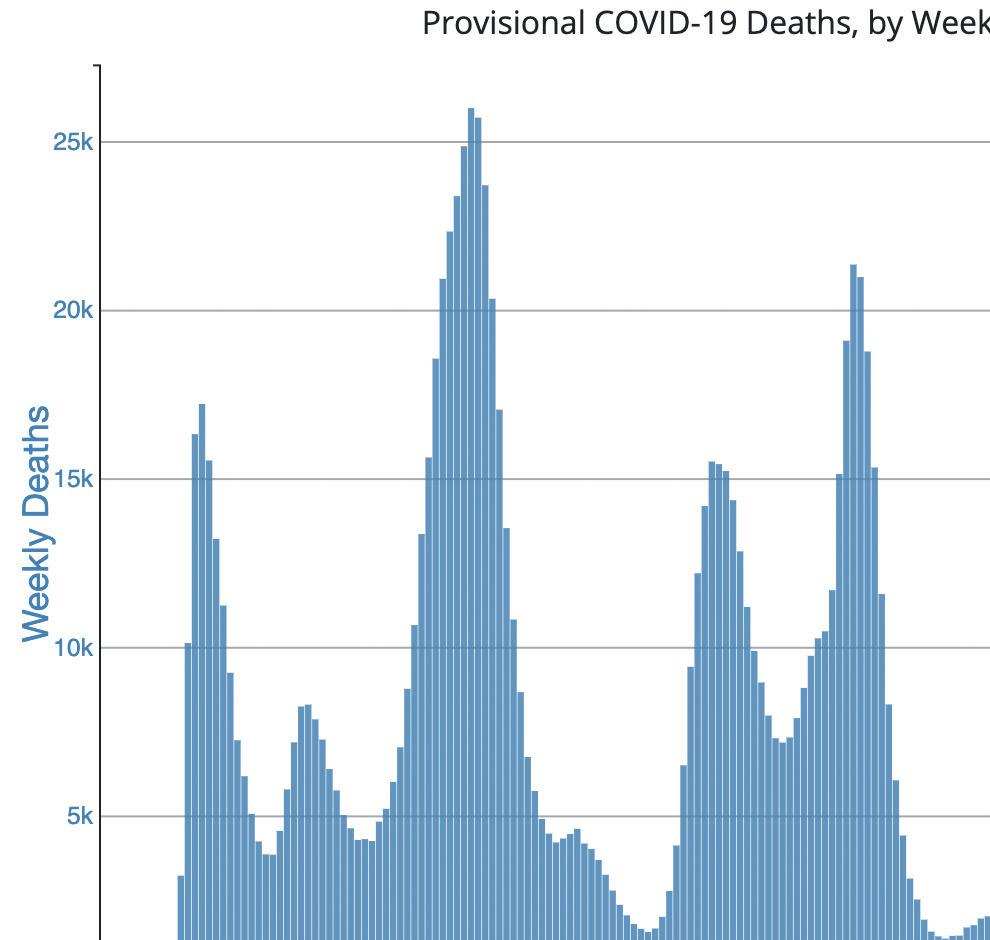

COVID, masking and disability justice. A link to Estes’ Venmo account sits right below this attribution: “This pamphlet was created by one very passionate (and very tired) queer, trans, disabled person.”
She likens the current state of COVID to the HIV/AIDS crisis of the 1980s and ’90s, when health authorities and government officials did not take action because the virus was associated with marginalized groups.
“There’s this message [that] it was a pandemic of the vulnerable,” Estes said, “that ‘only’ the elderly or disabled people were going to be negatively impacted.
“It’s ultimately a sign of ableism and really some eugenicist aspects of our society that we have so widely accepted that any of these deaths are acceptable.”
For Nancy Harrison, the choice to mask is partially a financial one. She runs Functional Physical Therapy in Gunbarrel with her partner Ken. When she got COVID in March 2020, the clinic shut down for two weeks. When she and Ken got it a second time this past summer after traveling for her father’s funeral, the practice stayed closed for three weeks.
“Both had significant financial impact,” Harrison said. “Whether it’s COVID or something else, I miss work when I’m sick, and that gets expensive.”
Everyone who comes in is required to wear a mask, and Harrison herself sports a KN95 every day. Harrison sees it as necessary to protect herself and her

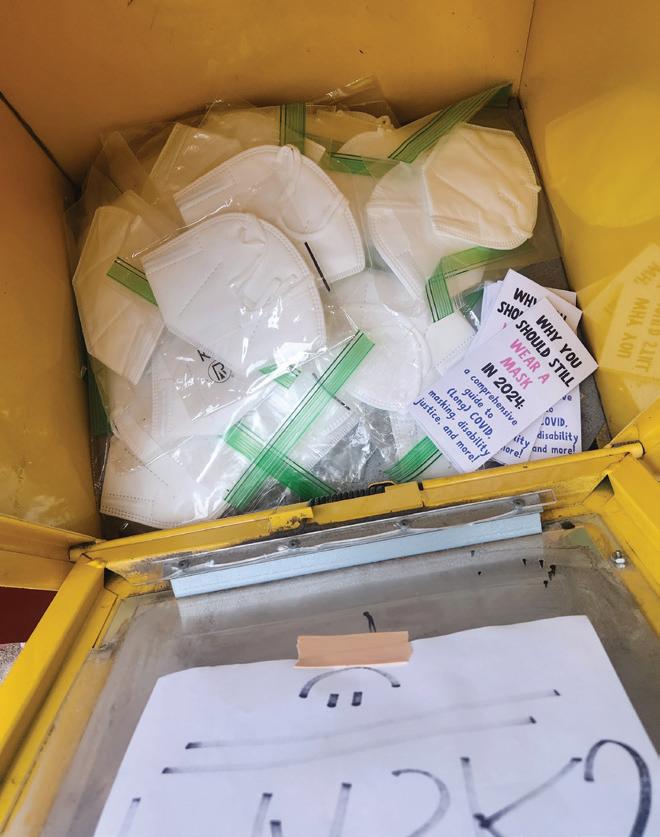


patients — some of whom are immunocompromised.
“I see between 40-50 people a week,” she said. “That’s a lot of exposure at very close contact for extended periods of time.”
“Masking is a workers’ rights issue,” Dreamer said. “So many workers are getting long COVID — they lose basically everything.”
In partnership with Project Protect Food Systems, CSC is fundraising to purchase protective equipment — masks, boots, gloves — for farm workers who are vulnerable to COVID and H5N1, colloquially known as bird flu.
“Farm workers are kind of at a unique risk because of how employers can exploit their undocumented status” and limit the information they get about health concerns, Dreamer said.
A recognition of shared struggles is key, Estes said, particularly because vulnerability to long COVID intersects with race, age, class, gender and ability. “Pretty much any marginalized group you can think of in society is probably going to be disproportionately affected by COVID for reasons that are likely systemic.”
Mask blocs and mutual aid are generally intersectional. For Dreamer, the community they found has been almost as important as the activism.
“Most of us are disabled in some way or neurodivergent, most of us are queer and trans, and we’re tired,” they said.
“We couldn’t do it alone anymore.”
CSC tries to host one virtual and one in-person event each month; mostly game nights. A support group meets weekly.
“A lot of us have a lot of sadness over what we’ve lost,” Dreamer said. “I lost so much community; I lost most of my close friendships. I needed to build a community that understands, that can be a place I do not have to push so hard for mitigations. I would prefer to be around people who just know and just show up in a mask.
“That is one of the biggest things I hear from other COVID-cautious people. They just feel alone; their wider circle of people don’t get it or have moved on and don’t care anymore.”
Learning about historic queer activism has given Estes “a source of hope” and the fortitude to continue organizing — for this pandemic and the next.
“We still have to keep resisting,” she said, “keep taking care of each other.”
“Most of us aren’t doing it because we super enjoy it,” Dreamer added. “We’re doing it to stay alive.”
Covid Safe Colorado is looking for volunteers in Boulder County. Visit covidsafecolorado .org to learn more or donate.





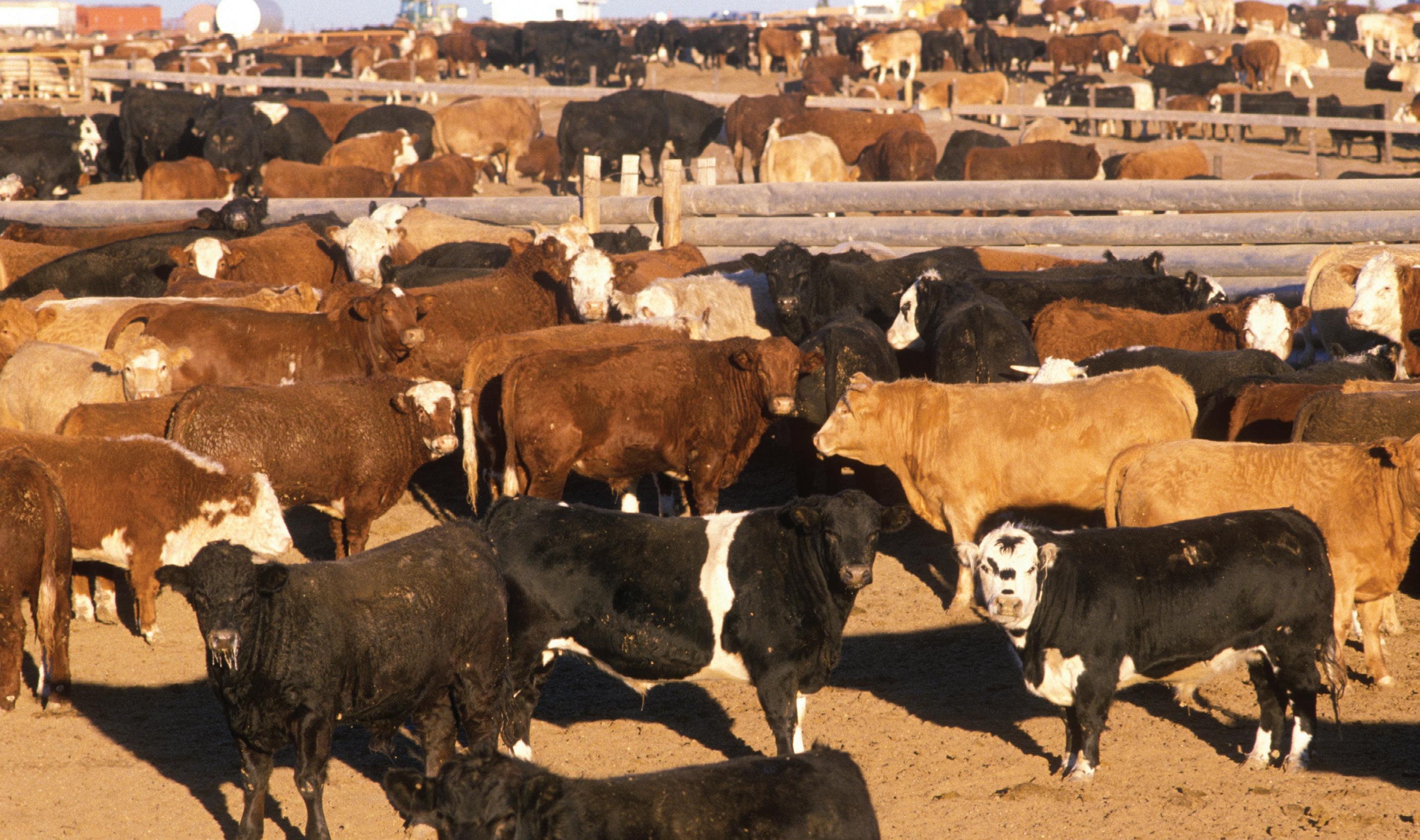
Keith Poulsen’s jaw dropped when farmers showed him images on their cellphones at the World Dairy Expo in Wisconsin in October. A livestock veterinarian at the University of Wisconsin, Poulsen had seen sick cows before, with their noses dripping and udders slack.
But the scale of the farmers’ efforts to treat the sick cows stunned him. They showed videos of systems they built to hydrate hundreds of cattle at once. In 14-hour shifts, dairy workers pumped gallons of electrolyte-rich fluids into ailing cows through metal tubes inserted into the esophagus.
“It was like watching a field hospital on an active battlefront treating hundreds of wounded soldiers,” he said.
Nearly a year into the first outbreak of the bird flu among cattle, the virus shows no sign of slowing. The U.S. government failed to eliminate the virus on dairy farms when it was confined to a handful
Dead workers, sick cows and a rapidly spreading virus: How the U.S. lost control of the bird flu
BY AMY MAXMEN, KFF HEALTH NEWS
of states, by quickly identifying infected cows and taking measures to keep their infections from spreading. Now at least 875 herds across 16 states have tested positive.
Experts say they have lost faith in the government’s ability to contain the outbreak.
“We are in a terrible situation and going into a worse situation,” said Angela Rasmussen, a virologist at the University of Saskatchewan in Canada. “I don’t know if the bird flu will become a pandemic, but if it does, we are screwed.”
To understand how the bird flu got out of hand, KFF Health News interviewed nearly 70 government officials, farmers
and farmworkers, and researchers with expertise in virology, pandemics, veterinary medicine and more.
Together with emails obtained from local health departments through public records requests, this investigation revealed key problems, including deference to the farm industry, eroded public health budgets, neglect for the safety of agriculture workers, and the sluggish pace of federal interventions.
Case in point: The U.S. Department of Agriculture this month announced a federal order to test milk nationwide. Researchers welcomed the news but said it should have happened months ago — before the virus was so entrenched.
“It’s disheartening to see so many of the same failures that emerged during the COVID-19 crisis reemerge,” said Tom Bollyky, director of the Global Health Program at the Council on Foreign Relations.
Far more bird flu damage is inevitable, but the extent of it will be left to the Trump administration and Mother Nature. Already, the USDA has funneled more than $1.7 billion into tamping down the bird flu on poultry farms since 2022, which includes reimbursing farmers who’ve had to cull their flocks, and more than $430 million into combating the bird flu on dairy farms. In coming years, the bird flu may cost billions of dollars more in expenses and losses. Dairy industry experts say the virus kills roughly 2% to 5% of infected dairy cows and reduces a herd’s milk production by about 20%.
Worse, the outbreak poses the threat of a pandemic. More than 60 people in the U.S. have been infected, mainly by cows
or poultry, but cases could skyrocket if the virus evolves to spread efficiently from person to person. And the recent news of a person critically ill in Louisiana with the bird flu shows that the virus can be dangerous.
Just a few mutations could allow the bird flu to spread between people. Because viruses mutate within human and animal bodies, each infection is like a pull of a slot machine lever.
“Even if there’s only a 5% chance of a bird flu pandemic happening, we’re talking about a pandemic that probably looks like 2020 or worse,” said Tom Peacock, a bird flu researcher at the Pirbright Institute in the United Kingdom, referring to COVID. “The U.S. knows the risk but hasn’t done anything to slow this down,” he added.
Beyond the bird flu, the federal government’s handling of the outbreak reveals cracks in the U.S. health security system that would allow other risky new pathogens to take root.
“This virus may not be the one that takes off,” said Maria Van Kerkhove, director of the emerging diseases group at the World Health Organization. “But this is a real fire exercise right now, and it demonstrates what needs to be improved.”
It may have been a grackle, a goose or some other wild bird that infected a cow in northern Texas. In February, the state’s dairy farmers took note when cows stopped making milk. They worked alongside veterinarians to figure out why. In less than two months, veterinary researchers identified the highly pathogenic H5N1 bird flu virus as the culprit.
Long listed among pathogens with pandemic potential, the bird flu’s unprecedented spread among cows marked a worrying shift. It had evolved to thrive in animals that are more like people biologically than birds.
After the USDA announced the dairy outbreak on March 25, control shifted from farmers, veterinarians and local officials to state and federal agencies. Collaboration disintegrated almost immediately.
Farmers worried the government might block their milk sales or even demand
sick cows be killed, as poultry are, said Kay Russo, a livestock veterinarian in Fort Collins, Colorado.
Instead, Russo and other veterinarians said, they were dismayed by inaction. The USDA didn’t respond to their urgent requests to support studies on dairy farms — and for money and confidentiality policies to protect farmers from financial loss if they agreed to test animals.
The USDA announced that it would conduct studies itself. But researchers grew anxious as weeks passed without results. “Probably the biggest mistake from the USDA was not involving the boots-on-the-ground veterinarians,” Russo said.
Will Clement, a USDA senior adviser for communications, said in an email: “Since first learning of H5N1 in dairy cattle in late March 2024, USDA has worked swiftly and diligently to assess the prevalence of the virus in U.S. dairy herds.” The agency provided research funds to state and nation-


al animal health labs beginning in April, he added.
The USDA didn’t require lactating cows to be tested before interstate travel until April 29. By then, the outbreak had spread to eight other states. Farmers often move cattle across great distances,
for calving in one place, raising in warm, dry climates, and milking in cooler ones. Analyses of the virus’ genes implied that it spread between cows rather than repeatedly jumping from birds into herds.
Milking equipment was a likely source of infection, and there were hints of other possibilities, such as through the air as cows coughed or in droplets on objects, like work boots. But not enough data had been collected to know how exactly it was happening. Many farmers declined to test their herds, despite an announcement of funds to compensate them for lost milk production in May.
“There is a fear within the dairy farmer community that if they become officially listed as an affected farm, they may lose their milk market,” said Jamie Jonker, chief science officer at the National Milk Producers Federation, an organization that represents dairy farmers. To his knowledge, he added, this hasn’t happened. Speculation filled knowledge gaps. Zach Riley, head of the Colorado Livestock Association, said he suspected that wild birds may be spreading the virus to herds across the country, despite sci-
entific data suggesting otherwise. Riley said farmers were considering whether to install “floppy inflatable men you see outside of car dealerships” to ward off the birds.
Advisories from agriculture departments to farmers were somewhat speculative, too. Officials recommended biosecurity measures such as disinfecting equipment and limiting visitors. As the virus kept spreading throughout the summer, USDA senior official Eric Deeble said at a press briefing, “The response is adequate.”
The USDA, the Centers for Disease Control and Prevention and the Food and Drug Administration presented a united front at these briefings, calling it a “One Health” approach. In reality, agriculture agencies took the lead. This was explicit in an email from a local health department in Colorado to the county’s commissioners. “The State is treating this primarily as an agriculture issue (rightly so) and the public health part is secondary,” wrote Jason Chessher, public health director in Weld County, Colorado. The state’s leading agriculture county, Weld’s livestock and poultry industry produces about $1.9 billion in sales each year.
In July, the bird flu spread from dairies in Colorado to poultry farms. To contain it, two poultry operations employed about 650 temporary workers — Spanishspeaking immigrants as young as 15 — to cull flocks. Inside hot barns, they caught infected birds, gassed them with carbon dioxide, and disposed of the carcasses. Many did the hazardous job without goggles, face masks and gloves. By the time Colorado’s health department asked if workers felt sick, five women and four men had been infected. They all had red, swollen eyes — conjunctivitis — and several had such symptoms as fevers, body aches and nausea. State health departments posted online notices offering farms protective gear, but dairy workers in several states told KFF Health News that they had none. They also hadn’t heard about the bird flu, never mind tests for it.
Studies in Colorado, Michigan and Texas would later show that bird flu cases had gone under the radar. In one analy-
sis, eight dairy workers who hadn’t been tested — 7% of those studied — had antibodies against the virus, a sign that they had been infected.
Missed cases made it impossible to determine how the virus jumped into people and whether it was growing more infectious or dangerous.
“I have been distressed and depressed by the lack of epidemiologic data and the lack of surveillance,” said Nicole Lurie, an executive director at the international organization the Coalition for Epidemic Preparedness Innovations, who served as assistant secretary for preparedness and response in the Obama administration.
Citing “insufficient data,” the British government raised its assessment of the risk posed by the U.S. dairy outbreak in July from three to four on a six-tier scale.
Virologists around the world said they were flabbergasted by how poorly the United States was tracking the situation.
“You are surrounded by highly pathogenic viruses in the wild and in farm animals,” said Marion Koopmans, head of virology at Erasmus Medical Center in the Netherlands. “If three months from now we are at the start of the pandemic, it is nobody’s surprise.”
Although the bird flu is not yet spreading swiftly between people, a shift in that direction could cause immense suffering. The CDC has repeatedly described the cases among farmworkers this year as mild — they weren’t hospitalized. But that doesn’t mean symptoms are a breeze, or that the virus can’t cause worse.
“It does not look pleasant,” wrote Sean Roberts, an emergency services specialist at the Tulare County, California, health department in an email to colleagues in May. He described photographs of an infected dairy worker in another state: “Apparently, the conjunctivitis that this is causing is not a mild one, but rather ruptured blood vessels and bleeding conjunctiva.”
Over the past 30 years, half of around 900 people diagnosed with bird flu around the world have died. Even if the case fatality rate is much lower for this strain of the bird flu, COVID showed how devastating a 1% death rate can be when a virus spreads easily.
Like other cases around the world, the person now hospitalized with the bird flu in Louisiana appears to have gotten the virus directly from birds. After the case was announced, the CDC released a statement saying, “A sporadic case of severe H5N1 bird flu illness in a person is not unexpected.”
Local health officials were trying hard to track infections, according to hundreds of emails from county health departments in five states. But their efforts were stymied. Even if farmers reported infected herds to the USDA and agriculture agencies told health departments where the infected cows were, health officials had to rely on


farm owners for access.
“The agriculture community has dictated the rules of engagement from the start,” said Michael Osterholm, director of the Center for Infectious Disease Research and Policy at the University of Minnesota. “That was a big mistake.”
Some farmers told health officials not to visit and declined to monitor their employees for signs of sickness. Sending workers to clinics for testing could leave them shorthanded when cattle needed care.
“Producer refuses to send workers to Sunrise [clinic] to get tested since they’re too busy. He has pinkeye, too,” said an email from the Weld, Colorado, health department.
“We know of 386 persons exposed — but we know this is far from the total,” said an email from a public health specialist to officials at Tulare’s health department recounting a call with state health officials. “Employers do not want to run this through worker’s compensation. Workers are hesitant to get tested due to cost,” she wrote.
Jennifer Morse, medical director of the Mid-Michigan District Health Department, said local health officials have been hesitant to apply pressure after the backlash many faced at the peak of COVID.
Describing the 19 rural counties she serves as “very minimal-governmentminded,” she said, “if you try to work against them, it will not go well.”
Rural health departments are also stretched thin. Organizations that specialize in outreach to farmworkers offered to
assist health officials early in the outbreak, but months passed without contracts or funding. During the first years of COVID, lagging government funds for outreach to farmworkers and other historically marginalized groups led to a disproportionate toll of the disease among people of color.
Kevin Griffis, director of communications at the CDC, said the agency worked with the National Center for Farmworker Health throughout the summer “to reach every farmworker impacted by H5N1.” But Bethany Boggess Alcauter, the center’s director of public health programs, said it didn’t receive a CDC grant for bird flu outreach until October, to the tune of $4 million. Before then, she said, the group had very limited funds for the task. “We are certainly not reaching ‘every farmworker,’” she added.
Farmworker advocates also pressed the CDC for money to offset workers’ financial concerns about testing, including paying for medical care, sick leave and the risk of being fired. This amounted to an offer of $75 each. “Outreach is clearly not a huge priority,” Boggess said. “I hear over and over from workers, ‘The cows are more valuable than us.’”
The USDA has so far put more than $2.1 billion into reimbursing poultry and dairy farmers for losses due to the bird flu and other measures to control the spread on farms. Federal agencies have also put $292 million into developing and stockpiling bird flu vaccines for animals and people. In a controversial decision, the CDC has advised against offering the ones on hand to farmworkers.
“If you want to keep this from becoming a human pandemic, you focus on protecting farmworkers, since that’s the most likely way that this will enter the human population,” said Peg Seminario, an occupational health researcher in Bethesda, Maryland. “The fact that this isn’t happening drives me crazy.”
Nirav Shah, principal deputy director of the CDC, said the agency aims to keep workers safe. “Widespread awareness does take time,” he said. “And that’s the work we’re committed to doing.”
As President-elect Donald Trump comes into office in January, farmworkers may be even less protected. Trump’s pledge of mass deportations will have
repercussions whether they happen or not, said Tania Pacheco-Werner, director of the Central Valley Health Policy Institute in California.
Many dairy and poultry workers are living in the U.S. without authorization or on temporary visas linked to their employers. Such precarity made people less willing to see doctors about COVID symptoms or complain about unsafe working conditions in 2020.
Pacheco-Werner said, “Mass deportation is an astronomical challenge for public health.”
A switch flipped in September among experts who study pandemics as national security threats. A patient in Missouri had the bird flu, and no one knew why.
“Evidence points to this being a one-off case,” Shah said at a briefing with journalists. About a month later, the agency revealed it was not.
Antibody tests found that a person who lived with the patient had been infected, too. The CDC didn’t know how the two had gotten the virus, and the possibility of human transmission couldn’t be ruled out.
Nonetheless, at an October briefing, Shah said the public risk remained low and the USDA’s Deeble said he was optimistic that the dairy outbreak could be eliminated.
Experts were perturbed by such confi-
dent statements in the face of uncertainty, especially as California’s outbreak spiked and a child was mysteriously infected by the same strain of virus found on dairy farms.
“This wasn’t just immaculate conception,” said Stephen Morrison, director of the Global Health Policy Center at the Center for Strategic and International Studies. “It came from somewhere and we don’t know where, but that hasn’t triggered any kind of reset in approach — just the same kind of complacency and low energy.”
Sam Scarpino, a disease surveillance specialist in the Boston area, wondered how many other mysterious infections had gone undetected. Surveillance outside of farms was even patchier than on them, and bird flu tests have been hard to get.
Although pandemic experts had identified the CDC’s singular hold on testing for new viruses as a key explanation for why America was hit so hard by COVID in 2020, the system remained the same. Bird flu tests could be run only by the CDC and public health labs until this month, even though commercial and academic diagnostic laboratories had inquired about running tests since April. The CDC and FDA should have tried to help them along months ago, said Ali Khan, a former top CDC official who now leads the University of Nebraska Medical Center College of Public Health.
As winter sets in, the bird flu becomes harder to spot because patient symptoms may be mistaken for the seasonal flu. Flu season also raises a risk that the two flu viruses could swap genes if they infect a person simultaneously. That could form a hybrid bird flu that spreads swiftly through coughs and sneezes.
A sluggish response to emerging outbreaks may simply be a new, unfortunate norm for America, said Bollyky, at the Council on Foreign Relations. If so, the nation has gotten lucky that the bird flu still can’t spread easily between people. Controlling the virus will be much harder and costlier than it would have been when the outbreak was small. But it’s possible. Agriculture officials could start testing every silo of bulk milk, in every state, monthly, said Poulsen, the livestock veterinarian. “Not one and done,” he added. If they detect the virus, they’d need to determine the affected farm in time to stop sick cows from spreading infections to the rest of the herd — or at least to other farms. Cows can spread the bird flu before they’re sick, he said, so speed is crucial. Curtailing the virus on farms is the best way to prevent human infections, said Jennifer Nuzzo, director of the Pandemic Center at Brown University, but human surveillance must be stepped up, too. Every clinic serving communities where farmworkers live should have easy access to bird flu tests — and be encouraged to use them. Funds for farmworker
outreach must be boosted. And, she added, the CDC should change its position and offer farmworkers bird flu vaccines to protect them and ward off the chance of a hybrid bird flu that spreads quickly.
The rising number of cases not linked to farms signals a need for more testing in general. When patients are positive on a general flu test — a common diagnostic that indicates human, swine, or bird flu — clinics should probe more deeply, Nuzzo said.
The alternative is a wait-and-see approach in which the nation responds only after enormous damage to lives or businesses. This tack tends to rely on mass vaccination. But an effort analogous to Trump’s Operation Warp Speed is not assured, and neither is rollout like that for the first COVID shots, given a rise in vaccine skepticism among Republican lawmakers.
Change may instead need to start from the bottom up — on dairy farms, still the most common source of human infections, said Poulsen. He noticed a shift in attitudes among farmers at the Dairy Expo: “They’re starting to say, ‘How do I save my dairy for the next generation?’ They recognize how severe this is, and that it’s not just going away.”
Healthbeat is a nonprofit newsroom covering public health published by Civic News Company and KFF Health News.










Show up early for these supporting acts before they become next year’s next big thing
BY BOULDER WEEKLY STAFF
Like every year, 2025 promises to bring a wealth of can’t-miss live music to the Front Range. You and your friends are already scheming to be first in the queue to avoid resale hell for the season’s landmark gigs, so we don’t need to tell you about the major names coming to town in the months ahead. But what about the opening acts supporting your favorite artists? Here at Boulder Weekly, we’re big fans of the little guy — because we are the little guy. That’s why we’re passing over those giant letters on the marquee for a look at the emerging music artists who will be kicking off this year’s slate of touring shows in Colorado. From queer antifascist black metal to heartland indie rock, alternative hip-hop and points in between, here’s a glance at the year’s upcoming bottom-bill acts that might just become your next favorite band.

Headliner: Tyler, The Creator | 7:30 p.m. Tuesday, Feb. 11, Ball Arena, 1000 Chopper Circle, Denver. $212+
The patiently paced art films of German “slow cinema” auteur Wim Wenders might not seem to be a spiritual cousin to the brash exuberance of L.A. hip-hop duo Paris Texas, but the ruckus made by young emcees Louie Pastel and Felix thrives on upended expectations.
Taking their stage name from the celebrated director’s 1984 masterpiece starring Harry Dean Stanton, the outfit has whipped up a fierce and devoted following since crashing into the rap game six years ago. But don’t mistake the high-art association for stuffy pretense: As the fuzzy, guitar-driven sound of their latest LP Mid Air suggests,

Any music artists coming to the Front Range you’d like to see profiled in BW this year? Email arts and culture editor Jezy J. Gray: jgray@boulderweekly.com.
soundtrack for pondering the winter frost of the Front Range and daydreaming of death.
Paris Texas gets their mileage from bringing together disparate elements of punk and hip-hop to smack you across the teeth with something new.
“It was about both places, respectively, being polar opposites,” Felix said of the duo’s moniker in a 2023 interview with The Fader. “That worked for us in terms of how [we] grew up and the music we make and our interests, juxtaposed to what the norm is. Nobody is doing it how we’re doing it.”

Headliner: Mount Eerie | 8 p.m. Saturday, Feb. 22, Fox Theatre, 1135 13th St., Boulder. $27.50
At first blush, the somber and emotive black metal mélange of Pacific Northwest duo Ragana feels like the perfect
But creative partners Maria Stocke and Coley Gilson are interested in a lot more than doom and gloom on Desolation’s Flower, the avant-garde act’s latest release via “dark music” juggernaut The Flenser. Describing the title track as “a hymn of gratitude for queer and trans ancestors,” the record opens with a call to survival: “Unending holy bloom that cannot be denied,” Stocke howls, her glass-busting shriek breaking into a guttural, wounded cry. “We hold eternity / they cannot make us die.”
“I have always found a lot of resonance and catharsis in the imagery of apocalypse and destruction of the current political configuration of the world,” Coley told Bandcamp Daily upon its release in the fall of 2023. “But also in the imagery of building a new world inside the dead shell of the old.”
Headliner: MJ Lenderman | 8 p.m. Thursday, Feb. 27, Fox Theatre. Resale: $80+
On his fifth LP with indie-rock upstart Wild Pink, founding member John Ross is throwing out the rule book. Stepping back from the lush arrangements of the Brooklyn-based act’s 2022 breakout ILYSM, his latest record Dulling the Horns finds the 37-year-old songwriter
refining the formula that’s made him a rising star in the world of heartland guitar music while hanging onto a witty and wistful sense of longing.
“There must be a long-ass German word / for when you’ve destroyed something good,” he sings toward the end of the record’s clean and propulsive Side A. “Something you used to love / but had to let go of.”
“I feel like I’m kind of starting over in some ways,” Ross told Beats Per Minute last year. “For this record, I just wanted to make things as easy to get my head around as possible. I didn’t want a ‘big concept record’ or anything. I just wanted to make a record that sounds like the band when you go out to see the show. … I wanted to strip things down to their bare bones.”
Headliner: Chat Pile | 7:30 p.m. Thursday, March 6, Gothic Theatre, 3263 S. Broadway, Englewood. $25+
Smashing together shards of ear-splitting noise rock, shoegaze and melodic hardcore, Florida-based outfit Gouge Away are carving a singular shape for themselves in the wide world of heavy music. Since the band’s 2012 formation in Fort Lauderdale, the bruising quintet led by Christina Michelle have won listeners the old-fashioned way by building meaningful connections with audiences through relentless touring.


Last year’s watermark LP Deep Sage — the band’s third full-length after a pandemic-induced pause — found Gouge Away deepening their sound by practicing the fine art of restraint. The outfit’s latest for hardcore standard bearer Deathwish Records finds them incorporating elements of grunge and druggy ’90s guitar rock to craft an 11-track offering that provides a close approximation to their blistering punk-club gigs.
“We definitely wanted to produce an ode to the live show,” Michelle told New Noise. “We just wanted to sound like ourselves and put down on tape exactly how we sounded in that moment. It never crossed our minds to go the traditional way, because the guys recorded the guitar, bass and drums live on [previous LP] Burnt Sugar. Then I recorded all the vocals by myself. This time I knew I wanted to record live with them, even if just for a few songs.”

Headliner: Soccer Mommy | 8 p.m. Monday, March 10, Ogden Theatre, 935 E. Colfax Ave., Denver. $35+
Singer-songwriter Hana Vu isn’t interested in taking things slow. By the time she graduated high school in 2018, the
multi-instrumentalist had a debut album and Willow Smith collab to her name. Now 24 and dubbed “L.A.’s indie-pop prodigy” by the Los Angeles Times, Vu is poised to take her brand of bummer guitar rock to a new level of notoriety.
That much is clear on the opening track of her latest full-length LP Romanticism, released last summer via Ghostly International. Over an aching swell of synths and strings, Vu’s voice bubbles to the surface with quiet confidence and a subtle sting of sadness: “There’s no song in my heart like I thought there was when I was young.”
Given the artist has three full-length albums under her belt before the development of her prefrontal cortex, we can safely assume this lament is a metaphor. With an emotional wisdom beyond her years, Vu likely has many more songs to sing and many more lessons about love and loss to impart.
“As I get older, I’m more aware that love is fleeting — everything is fleeting,” Vu told Teen Vogue upon the album’s release in May. “There is great sadness when you come into contact with other people and you love them.”
Headliner: Laura Jane Grace | 8 p.m. Friday, April 4, Aggie Theatre, 204 S. College Ave., Fort Collins. $40
There’s a famous rule in the world of improv comedy: Say “yes” to the comedic premise at hand, then expand it. You’ll hear an echo of this tried and true maxim in The Answer Is Always Yes, the latest LP from Australian indierock smartass Alex Lahey, which finds the 32-year-old musician embracing the bit and taking it to new heights.
But there’s more to Lahey’s music than acerbic wit and a sharp sense of comedic timing. Beneath the Aussie’s layers of barbed humor is a human-level unpacking of what it feels like to be an outsider.
“Living in a world that wasn’t made for you makes you pretty strong and adaptive, and you find the fun in it,” Lahey told Women in Pop last year. “It also makes you realize how absurd everything is. With The Answer Is Always Yes, I wanted to get weird
Why are concerts so expensive?
Hit the QR code to check out BW reporter Kaylee Harter’s exploration as part of our Weekly Why series.

because the world is weird, and it’s even weirder when you realize you don’t fit into it all the time.”
Carolina, set out to make a clean break from the album’s lockdown-era predecessor with a more effervescent sound.

Headliner: Watchhouse | 4:30 p.m. April 19, Macky Auditorium - CU Boulder, 1595 Pleasant Ave. $50+
Singer-songwriter M.C. Taylor wanted to turn the page when he went into the studio to record his latest LP, Jump for Joy. Following the introspective folkrock of 2021’s Quietly Blowing It, his twelfth album under the moniker Hiss Golden Messenger, the 48-year-old songwriter from Durham, North

“I wanted the songs to feel more outward-facing, to feel more ‘up,’ and to reflect what the band is capable of,” he said in a 2023 Boulder Weekly profile. “I think that giving myself that assignment came in part from thinking about the type of record Quietly Blowing It was … [a] very internal and inward-facing record. I probably couldn’t or wouldn’t make a record like that again. I felt like I reached the end of that particular road.”
Taylor returns to the Front Range with his more joyful sound as part of the Bluebird Music Festival in Boulder.
Headlined by fellow North Carolina folk duo Watchhouse, the weekend will include two sets from Hiss Golden Messenger: a full-band show on April 19, followed by a stripped-down performance the following night as part of the fest’s Strings & Stories series.
“We make it a point to not ever play the same set because it keeps us on our toes, keeps things interesting,” he says. “We’re trying to combine [the songs] into setlists that seem kind of varied, that are going to touch on as many of the different emotions, themes or rhythms that we can.”





















Despite funding and venue challenges, the local theater scene looks to thrive in 2025

BY TONI TRESCA












Theater in Boulder County continues to navigate a shifting landscape as we head into 2025. After nearly five decades, BDT Stage closed early last year, leaving the local arts scene without its iconic dinner theater. The Colorado Shakespeare Festival spent its entire season indoors at Roe Green Theatre, while the Mary Rippon Outdoor Theatre underwent extensive renovations.
Meanwhile, the fallout from Boulder’s handling of the 2A arts funding initiative remains a contentious issue, as much-anticipated funding for the arts was redirected to city expenses, sparking outrage in the creative community. Amid these challenges, the ever-crowded Dairy Arts Center has launched a new co-production program to increase access for emerging artists.
2024 also saw standout achievements: Local Theater Company celebrated the successful world premieres of 237 Virginia Avenue and Stockade last year, the Boulder Ensemble Theatre Company (BETC) sold out multiple productions and immersive theater troupe The Catamounts dazzled audiences with four world premieres. As Boulder County’s theater community looks ahead, the 2025 season promises compelling productions and bold experimentation.
Here’s a quick rundown on what’s coming to a stage near you in the new year.
The Time is Always Right, Jan. 19 (Dairy); Hope and Gravity, Jan. 23 through Feb. 16 (Denver) and Feb. 21-23 (Nomad); Maytag Virgin (staged reading), Feb. 12 (Dairy); The White Chip, April 10 through May 4 (Dairy)
The Savoy, 2700 Arapahoe St., Denver | Dairy Arts Center, 2590 Walnut St., Boulder | Nomad Playhouse, 1410 Quince Ave., Boulder
BETC kicks off 2025 with The Time is Always Right, a celebration of Dr. Martin Luther King Jr.’s legacy through spoken word, music and dance. This one-night joint production with the Boulder Philharmonic and Boulder Ballet connects history to the present through art.
“Collaboration is a matter of survival,” says BETC Managing Director Mark
staged reading of Audrey Cefaly’s Maytag Virgin, a heartwarming story about two neighbors navigating love and loss. The season wraps up with The White Chip, an autobiographical dramedy by Sean Daniels about addiction and recovery.
“White Chip is also very much BETC’s brand — it is hot from off-Broadway, and we will be the regional premiere, as we were with Coal Country,” Ragan says.
“It’s the real story of how an artistic director of a theater company recovered after hitting rock bottom as an alcoholic. The elevator pitch sounds heavy, but Sean weaves in comic elements.”
John Proctor is the Villain, Feb. 21 through March 2; Something Rotten!, April 11-20; The Tempest, June 7 through Aug. 10; Richard II, July 5 through Aug. 10; Doctor Faustus, July 27
University Theatre Building, 261 CU Boulder
Later in the semester, John O’Farrell’s and Karey Kirkpatrick’s Something Rotten! serves up a hilarious look at two Renaissance-era playwrights attempting to create the first musical while duking it out with Willie Shakes.
The Colorado Shakespeare Festival returns for its 68th season, embracing the newly renovated Roe Green Theatre while the Mary Rippon Outdoor Theatre undergoes additional construction, with a reopening planned for 2026. This year’s lineup includes The Tempest and Richard II, two Shakespearean classics exploring themes of power, betrayal and forgiveness.
Doctor Faustus by Christopher Marlowe concludes the season in an original practice format, providing audiences with a rare glimpse into historical performance techniques from Shakespeare’s era, led by actor-manager Shunté Lofton
Chasing Breadcrumbs, Feb. 20 through March 9 (Dairy); Local Lab 14, April 25-27 (Nomad)
Ragan. “It’s not optional today; arts organizations have to really stand up for one another.”
The season’s first play is Michael Hollinger’s Hope and Gravity This nonlinear comedy explores the precarious connections between nine characters whose lives are disrupted when an elevator crashes.
“It delights in our foibles and reminds us how interconnected we are,” says artistic director Jessica Robblee. “It has real love for its characters, but there is infidelity and all the problems that come with a long-term relationship. Hollinger tells these stories in a loving way that makes you care about those people rather than distance yourself and judge them, which I believe is important right now.”
BETC’s commitment to community engagement is evident in its
CU Presents launches its season with two productions from the Department of Theatre, showcasing the talent of CU Boulder students. Kimberly Bellflower’s John Proctor is the Villain reimagines The Crucible with a sharp, contemporary perspective, examining issues of truth through the lens of a high school English class.
Dairy Arts Center, 2590 Walnut St., Boulder | Nomad Playhouse, 1410 Quince Ave., Boulder
Local Theater Company will continue its tradition of presenting new work to Boulder audiences. Its season opens with Chasing Breadcrumbs, a world premiere by Michelle Tyrene Johnson the


company presented at its new play festival in 2024.
Johnson’s latest is a comedic but incisive look at race in the arts. She describes her protagonist as “a young Black female playwright navigating a group of rich white women who want to commission a play to make themselves look better.”
Local Lab 14, the company’s annual presentation of new work, offers theater enthusiasts an inside look at how productions are developed. As always, the event features staged readings, audience feedback and conversations with playwrights. However, this year’s festival will be held at Nomad Playhouse in North Boulder rather than the Dairy, a change co-artistic director Nick Chase described to Boulder Weekly last July as “new for us and our audiences.”
As for the long-running festival’s value, Chase puts it simply: “It’s lovely to be with a play from its early stages and see it grow.”
Anastasia, Jan. 17-26; School of Rock, March 7-16
The Arts HUB, 420 Courtney Way, Lafayette
Under the leadership of new executive director Andrew Krimm, Lafayette’s The Arts HUB is embracing a renewed focus on financial sustainability. With a facility that now serves more than 11,000 attend-
ees each year and an operating budget of approximately $800,000, the organization aims to capitalize on its strengths.
The season begins with the regional premiere of Terrence McNally’s
Anastasia, a musical about a young woman’s search for her past. March brings the rocking energy of Julian Fellowes’ School of Rock, a celebration of music’s transformative power based on Richard Linklater’s hit film starring Jack Black Together, these productions showcase the HUB’s emphasis on impactful, crowdpleasing theater while laying the foundation for an ambitious future that includes outdoor stages and expanded classes.
Ghost Quartet, Jan. 18 through Feb. 8 (Boulder); FEED: Wood, June 13-15 (Longmont)
Dairy Arts Center, 2590 Walnut St., Boulder | Lone Hawk Farm, 10790 N 49th St., Longmont
The Catamounts, Boulder County’s champion of immersive and site-specific theater, is back with another season of boundary-pushing productions. The year begins with Ghost Quartet, a genre-defying musical written and composed by Dave Malloy that weaves across multiple timelines. Known for inventive staging, The Catamounts will transform The Dairy into an intimate, otherworldly setting for this haunting production.
In June, the company brings its signature avant-garde, multi-sensory theatrical dining experience series to Longmont’s Lone Hawk Farm with FEED: Wood The event pairs live performance with a locally sourced, multi-course meal inspired by the themes of the show. As artistic director Amanda Berg Wilson has emphasized in the past, these plate-
to-stage happenings are designed to blend storytelling with culinary artistry.
Martine Out of Time, April TBD (Lafayette); Vanya and Sonia and Masha and Spike, June TBD (Boulder and Lafayette); The Money at Any Price (staged reading), June TBD (Lafayette); Mr. Toad & Shakespeare, July TBD (Lafayette); Sherlock Holmes and the Greek Chorus, fall TBD (Lafayette); Holidazed & Confused, Dec. TBD (Lafayette)
Arapaho Center, 300 E. Simpson St., Lafayette | Dairy Arts Center, 2590 Walnut St., Boulder
The Theater Company of Lafayette (TCL) enters 2025 with unexpected stability, staying at the Arapaho Center despite plans to host productions at various theaters throughout the season. Renovations originally scheduled for this year were postponed due to funding issues, allowing TCL to remain in its current home.
“We thought we were going to be nomadic this year,” says artistic director Madge Montgomery. “So we planned for minimal tech, but since we get to stay put, we’re making the most of it.”
TCL’s season begins in April with Martine Out of Time, a world premiere by Nora Douglass about the trials and triumphs of adolescence in a small town.
June brings Christopher Durang’s Vanya and Sonia and Masha and Spike, a witty, contemporary comedy inspired by Chekhov’s works. That same month, The Money at Any Price, a staged reading of a comedic caper about greed by Katherine Dubois Reed, brings a new local flavor to the season.
The summer features the family-friendly double bill Mr. Toad & Shakespeare, combining a whimsical adaptation of The Wind in the Willows with an introduction to Shakespeare designed for young audiences. In the fall, Sherlock Holmes and The Greek Chorus puts a theatrical twist on the famous detective’s crimesolving adventures. TCL wraps up the year with Holidazed & Confused, its sixth annual holiday festival of short plays that range from heartfelt to humorous.
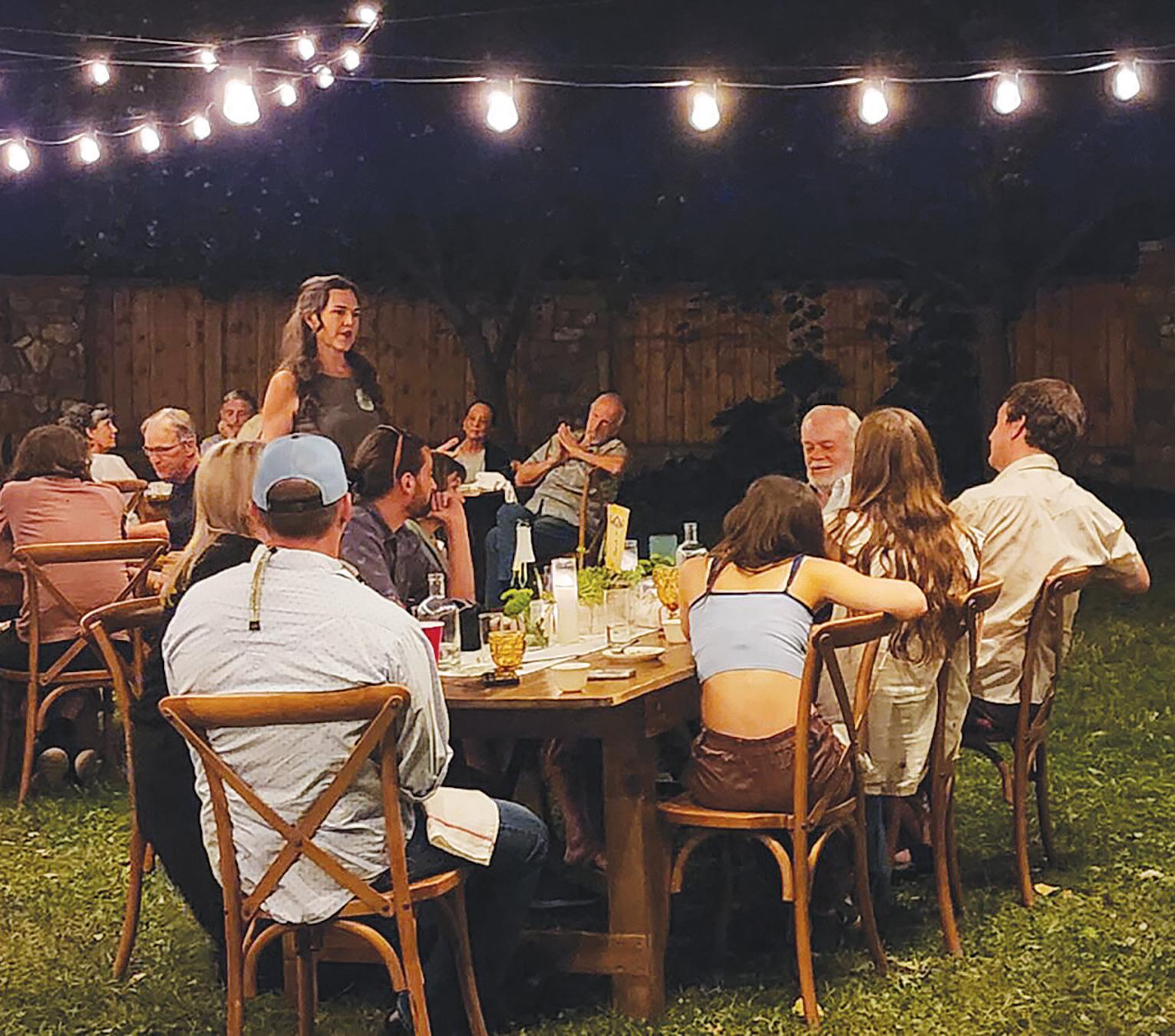
BY GABBY VERMEIRE
We all have questions and need advice, but sometimes the pseudo therapy in the Instagram stories of astrology girlies doesn’t cut it. Or maybe the gate-keeping culture of adventure bros has you fearing the judgment that comes with revealing yourself as a newbie at anything. This advice column exists to hold space for you and your Boulder queries (especially the uncool ones).
What’s the best gym membership to get in Boulder?
This economy has got us all fiending for ways to keep that checking account balance from going in a general bad direction. Go ahead, eat Annie’s Shells and White Cheddar for weeks on end, fake insomnia to save money on weed with a medical card — what is worth good money is a gym membership, and the gym you choose could be the difference between being emotionally traumatized by an obsessive and cruel man and not joining a climbing gym.
Skip the yoga studio (too horny), Crossfit (not horny enough), the Y (too close to the rock climbing gym) and get a membership at the OG Boulder Rec Centers. I could go on about the proletarian charm of city facilities or the joy of swimming laps, but the best part about the rec centers is being exposed to the nude human form in the locker rooms. I certainly owe my appreciation of all variations on breasts to them — and nonsexualized, aging bodies should be required viewing in these fake-ass times.
What do I do with people visiting who don’t hike or drink beer?
homies to talk about hiking at an outdoor athlete-coded brewery.
I for one think it is so cool that you are open-minded enough to be friends with nobeer no-hike people! Just existing in public with them while they’re neither hiking nor drinking beer would show them that you are a brave ally who celebrates diversity even when it’s weird and off-putting.
How do I find a boyfriend at CU?
Many a grown woman will see a gallon jug of Eldorado Springs water or a Baja Hoodie drug rug and suddenly find herself thinking with fondness and a little nausea on a long ago CU boyfriend. While it was definitely nice having someone who was always down to eat Illegal Pete’s burritos and watch The Wire, it was less nice waking up to the sound of a blowtorch when your CU boyfriend took a morning dab before his 8 a.m. chemistry lab.

For most in Boulder, these kind of people are threatening and confusing, because the average Joe here wakes up, chugs a Hazy IPA right before scrambling the Flatirons, hydrates at the top with Upslope Pale Ale, and then meets the

If you’re more on the romantically masochistic side, you could go on a date with your political science TA once finals are over and learn a *different* type of lesson… ;) Surprise, it’s a crash course in the huge gap in psychological maturity between a 20-year-old and a 27-year-old. Oh sorry, I forgot to answer your question: Tell him his Grateful Dead tattoo is cool, make him a quesadilla and he’s yours.

How can I keep hanging out with my climbing-obsessed friends after losing the climbing itch?
Like a bimbo who picks up Marx and suddenly can see a class struggle beyond her tiny world of hair and makeup, a climbing addict’s brain can be rewired by a realization that something like making kombucha is actually fun and definitely not climbing. While this is fine and dandy for his life expectancy,

it’s also hard to hang with the boys when every conversation turns to slabby routes and the group chat is just Mountain Project links.
You could try exposing them to the wide world of things beyond climbing like online poker, but learning online poker takes time, and there’s a more efficient way. Next time the gang gets together, you won’t be alone — and your date? She didn’t even know there was more than one type of climbing, and you bet your ass she’s going to ask your friends to explain the climbing lingo every. single. time. Once she tells them they’re “way more normal than that Free Solo guy!” everyone will be dying to talk about the Buffs.
Three ways the People’s Republic can do better in the new year
We all have judgements — yeah, hiking Chautauqua without having your dog under voice command seems like a dick move. Low-frequency judgements in your head or shared with a bitchy friend are one thing, but the smug Instagram story shaming a local coffee shop for charging extra for vegan milk is not the badass manifesto of moral superiority you think it is.

How do I stop underachieving? Is it a “fear of failure” thing?
Do you snark with your friends over the chumps who run the Leadville 100, training on precious, God-given Boulder weekends, turning the joy of eating into an efficiency equation of gels, and like, running so, so much? Maybe behind the snark is a wistful jealousy; but no, you’re absolutely *fine* with the fact that the most cardio you do is walk up and down the Avanti stairs to piss out that third mezcal Negroni, because you’re pretty sure you’re Type B down to your genetic code. And B stands for what? Bitch who loves funnn.
But what if you weren’t so fatalistic? I don’t know if you have a fear of failure, but I know that giving yourself grace is the first step to holding yourself to a higher standard, which can be an invitation to dream a little bigger, baby. Maybe you won’t be puking energy bars at Leadville, but who knows, you might start reading every night.
Got a burning Boulder question? DM @wholefoods_daddy on Instagram or email letters@boulderweekly with the subject line “Dear Whole Foods Daddy.”
“But wait!” you say, “I’m positive that publicly sneering at fellow Americans for voting against their own self-interest is being of spiritual service to my followers.” Um sweetie, were you acting in your own self-interest when you drank too much Chianti at Pasta Jay’s and signed your check “Free Luigi”? Banned from overcooked cannelloni forever, mio caro.
2. PLEASE DON’T EMBARRASS US.
“Please Please Please” by Sabrina Carpenter is a really funny song about not wanting a guy to embarrass you. Consider the lyric: “Heartbreak is one thing, my ego’s another.”
It was one thing for Boulder to break my heart when natural medicine bodega Pharmaca closed, but having Boulder-resident Governor JPo go so hard on the RFK welcome feels like the ego-crushing embarrassment of having your bf push The Carnivore Diet on your friends.
3. SNAP OUT OF IT.
You feel like shit so you stop at Natty G’s after work to load up on every discounted expired supplement that has Elderberry in it or just healing Elderberry vibes, and you’d rather fantasize about the soup-and-vibrator combo that awaits you at home than make small talk with the sweet older woman checking you out. To quote a very hot Cher talking to a very hot Nic Cage in Moonstruck: “Snap out of it!” I promise you won’t regret making the leap of connection to chat about how nummy those zinc lozenges are. Or maybe you’re trudging home from the bars, not quite tipsy enough to stave off the bitter January cold. But wait! If you took a second to look at all the wonder that is in front of you, you’d notice the lit-up fountain in front of the courthouse on the mall looks like a penis. The moments that challenge us the most are also invitations to take part in the great dance of life. You don’t need to be alone with your selfish thoughts; dance with the old women, dance with the penises.


5-7 p.m. Thursday, Jan. 2, Movement Climbing and Fitness, 2845 Valmont Road, Boulder. $20, free for members
Looking for a belay buddy, or just want some friends to climb with? Head to Movement Boulder for a weekly cliffhang organized by the Boulder Rock Climbers Meetup group. Group leaders will set you up with a partner, even if you don’t know how to belay, and you’ll climb away until it’s time to grab a beer with your new climbing crew.

4-7 p.m. Friday, Jan. 3, Busey Brews, 70 E. 1st St., Nederland. Free
What better way to spend the first Friday of 2025 than with a beer and live music in the mountains? Head to Ned’s favorite deck for live music from Half Pelican, a duo consisting of the Skiing Fiddler Andy Reiner and Big Richard cellist Joy Adams.

1-5 p.m. Saturday, Jan. 4, The StarHouse, 3476 Sunshine Canyon Drive, Boulder. $38-80
“Clear the past” and begin the new year as fresh as a newborn baby with this rebirthing ceremony of kundalini yoga, breathwork, meditation and gong promising a cathartic release. Then recharge with a six-gong bath “for a cosmic trip and ultimate integration.” Get tickets and more info: bit.ly/RebirthingBW

6:30-11:30 p.m. Saturday, Jan. 4, Mi Chantli, 1750 30th St., Boulder, $17+
Watch Boulder dancers bring Edgar Allen Poe’s haunting tales to life during this artful and unforgettable evening of burlesque. A special guest act from Terra Corda — and 45 minutes of open stage time — invite the audience to join in on the performances.

2-3:30 p.m. Saturday, Jan. 4, Moss Houseplants, 3008 Folsom St., Boulder. $50
Turn over a new leaf in 2025 with your own terrarium crafted with expert guidance from the greenthumbs at Moss Houseplants. Learn how to layer your mini garden properly to craft a balanced ecosystem in the palm of your hand. Price includes a terrarium jar, plants and all the necessary potting mediums.

1-3 p.m. Sunday, Jan. 5, pARTiculars Art Gallery, 401 S. Public Road, Lafayette. $75
Find your inner peace, and turn it into a garment during this guided meditation on the craft process hosted by pARTiculars Art Gallery. With each thread of the needle, you’ll find a connection to the material and art of sewing. Attendees are invited to bring their own material to repurpose. Register here: bit.ly/ SlowStitchBW.


1-4 p.m. Sunday, Jan. 5, Avalon Ballroom, 6185 Arapahoe Road, Boulder. $2 students, $8 members, $12 nonmembers, free to musicians.
Bebop over to Avalon Ballroom to listen, play or dance with local musicians jamming to music of the ’20s, ’30s and ’40s. There’s no bar or kitchen onsite, so BYOB and snacks. Attendees and musicians alike will have the chance to win prizes ranging from CDs from local artists to dinners at local eateries.

1:30-3 p.m., Sunday, Jan. 5, Standley Lake Library, 8485 Kipling St., Arvada. Free
Get caffeinated and creative at this monthly library event. Start the year with a watercolor 2025 bookshelf tracker — a colorful way to keep you moving on your annual reading goals. All skill levels are welcome and all supplies are provided.

6-8 p.m. Monday, Jan. 6, Sanitas Brewing Co., 3550 Frontier Ave., Boulder. Free
Kick the new year off right and get a jump on your resolutions with this weekly social pub run. Meet at Sanitas Brewing in Boulder, and expect about 5k on local paths at an 8-11 minute mile pace.

6-7 p.m., Tuesday, Jan. 7, Louisville Public Library, 951 Spruce St. Free
Ever wondered what that beautiful wildflower or freaky looking plant on your hike is all about? This free offering from the Louisville Public Library will help you learn about the flora native to our very own open space.
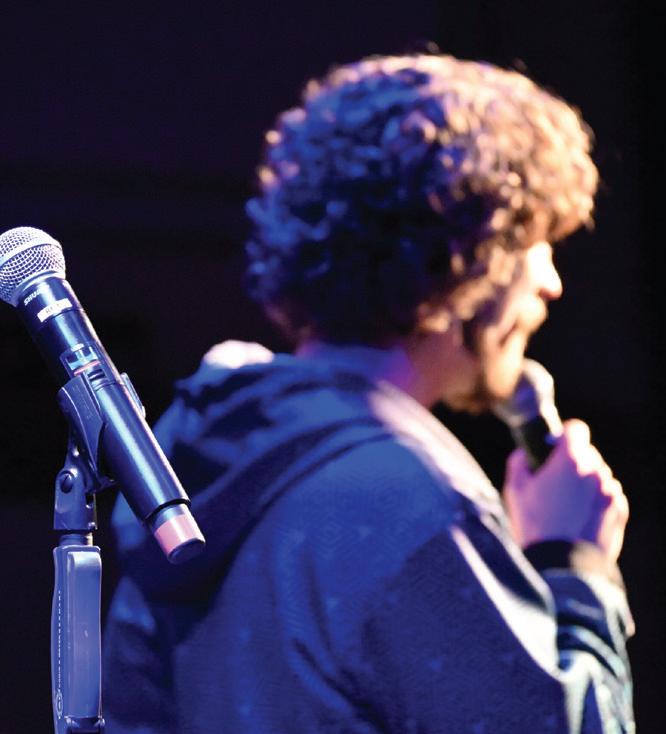
6-8 p.m. Tuesday, Jan. 7, Roots Music Project, 4747 Pearl St. Suite V3A, Boulder. Free
No liquid courage here — this open mic gives sober creatives a safe space to navigate the stage and find like-minded folks. From songs to poems to comedy, any type of performance is welcome. Read a BW feature on the monthly event: bit.ly/SoberNightLive

6-8 p.m. Tuesday, Jan. 7, Firehouse Art Center, 667 4th Ave., Longmont. Free
Whether you’re a cinematographer or a cinephile, the Firehouse Art Center is the place to be on the first Tuesday of every month. Meet fellow film enthusiasts, talk shop and share your work in progress during this casual roundtable discussion, and connect with local industry professionals.
FRIDAY • 01/03
SATURDAY 01/04
DOMI EDSON TRIO
THE KAT ELLIS ENSEMBLE ATURDAY OMI ENSEMBLE




THURSDAY, JAN. 2
DENNY DRISCOLL. 6 p.m. Bootstrap Brewing Company, 142 Pratt St., Longmont. Free
BOULDER OLD-TIME JAM. 6 p.m. Trident Cafe, 940 Pearl St., Boulder. Free
MOSAIC. 7 p.m. Muse Performance Space, 200 E. South Boulder Road, Lafayette. $20
EMILY KOOI WITH GENEVIEVE LIBIEN AND FINN O’SULLIVAN. 8 p.m. Globe Hall, 4483 Logan St., Denver. $19


DOMI EDSON TRIO. 6:30 p.m. Full Cycle Cafe and Bar, 2355 30th St., Boulder. $23
HAZEL MILLER WITH JACK HADLEY 7 p.m. Roots Music Project, 4747 Pearl St., Suite V3A, Boulder. $24
COLFAX SPEED QUEEN WITH NIGHT FISHING AND TEAM NONEXISTENT 8 p.m. Hi-Dive, 7 S. Broadway, Denver. $12
PHOOEY WITH MAY BE FERN, THE ROUGH TIMES AND HECK RECKONERS 8 p.m. Globe Hall, 4483 Logan St., Denver. $21
FRIDAY, JAN. 3
MOJAZZ. 6 p.m. Abbott & Wallace Distilling, 350 Terry St., Suite 120, Longmont. Free
GRABLE HOWIE. 6:30 p.m. Bricks on Main, 471 Main St., Longmont. Free
THE KAT ELLIS ENSEMBLE 6:30 p.m.
Full Cycle Cafe and Bar, 2355 30th St., Boulder. $23
UNAUTHORIZED ABSENCE. 7 p.m.
American Legion Post 32, 315 S. Bowen St., Longmont. Free
ANDY SYDOW WITH MIKE RING AND THE REGULAR 7 p.m. Bluebird Theater, 3317 E. Colfax Ave., Denver. $25
THE JERSEYS WITH MILE HIGH MOTOWN. 7:30 p.m. Nissi’s, 1455 Coal Creek Drive, Unit T, Lafayette. $20
SATURDAY, JAN. 4
MOUNTAIN REVERB 6 p.m. Bootstrap Brewing Company, 142 Pratt St., Longmont. Free
ANDREW MCCONATHY 6 p.m. Beyond the Mountain Brewing Co., 6035 Longbow Drive, Unit 109, Boulder. Free
SANTA RIOS. 8 p.m. Boulder Theater, 2032 14th St., Boulder. Free (before 9 p.m)
CASPA & RUSKO WITH THE WIDDLER, TERNION SOUND, MYTHM, CHIEF KAYA, TORCHA AND SKINNY LIMBS 9 p.m. Mission Ballroom, 4242 Wynkoop St., Denver. $55
BOULDER FRIENDS OF JAZZ JAM SESSION. 1 p.m. Avalon Ballroom, 6185 Arapahoe Road, Boulder. $12
LOCO UKULELE JAM 2 p.m. Bootstrap Brewing Company, 142 Pratt St., Longmont. Free
GEORGE STREET AND THE DRIVE. 3 p.m. Bricks on Main, 471 Main St., Longmont. Free
LO FI HO HUM WITH COLOR ME FATIGUED, THE DISASTERS AND SCHOOL OF ROCK. 5 p.m. Globe Hall, 4483 Logan St., Denver. $18
ANDREW ELWOOD QUINTET 7 p.m. Muse Performance Space, 200 E. South Boulder Road. $20
SUMMER DEAN WITH RYAN CHRYS & SUSAN PHELAN AND ANGIE STEVENS 7 p.m. Hi-Dive, 7 S. Broadway, Denver. $15

During the two years since Bear Hat has been on the scene, the local bluegrass outfit has played nearly every stage in the Boulder area — from free shows at Jamestown Mercantile to packed gigs at the Fox Theatre, where they perform on Jan. 10 with Northwoods and Steepland String Band. Scan the QR code for a Boulder Weekly feature on the band before you go. See listing for details.
TUESDAY, JAN. 7
105.5 THE COLORADO SOUND PRESENTS: SOBER NIGHT LIVE!
6 p.m. Roots Music Project, 4747 Pearl St., Suite V3A, Boulder. Free
WEDNESDAY, JAN. 8
THE HIGH ROAD HOME 6 p.m. Rosalee’s Pizzeria, 461 Main St., Longmont. Free
FRIDAY, JAN. 10
BEAR HAT WITH NORTHWOODS AND STEEPLAND STRING BAND.
7 p.m. Friday, Jan. 10, Fox Theatre, 1135 13th St., Boulder. $15+
BW PICK OF THE WEEK
SATURDAY, JAN. 11
ROOSTER PRESENTS RUSH
ARCHIVES WITH SCHOOL OF ROCK: THE BROOMFIELD HOUSE BAND
8 p.m. Saturday, Jan. 11, Fox Theatre, 1135 13th St. $15+
DRUNKEN HEARTS: ANDREW MCCONATHY. 4-8 p.m. Saturday, Jan. 11, Knotted Root Brewing Company, 250 N. Caribou St. Free
SUNDAY, JAN. 12
EVERY CHOIR 2-3:30 p.m. Sunday, Jan. 12, eTown Hall, 1535 Spruce St., Boulder. $15
THURSDAY, JAN. 16
EMMET COHEN TRIO 8 p.m. Thursday. Jan. 16, Boulder Theater, 2032 14th St. $30+
JJ MURPHY FEAT. EXPERIMENTAL BRUNCH. 7 p.m. Thursday, Jan. 16, Roots Music Project, 4747 Pearl St., Suite V3A, Boulder. $15+
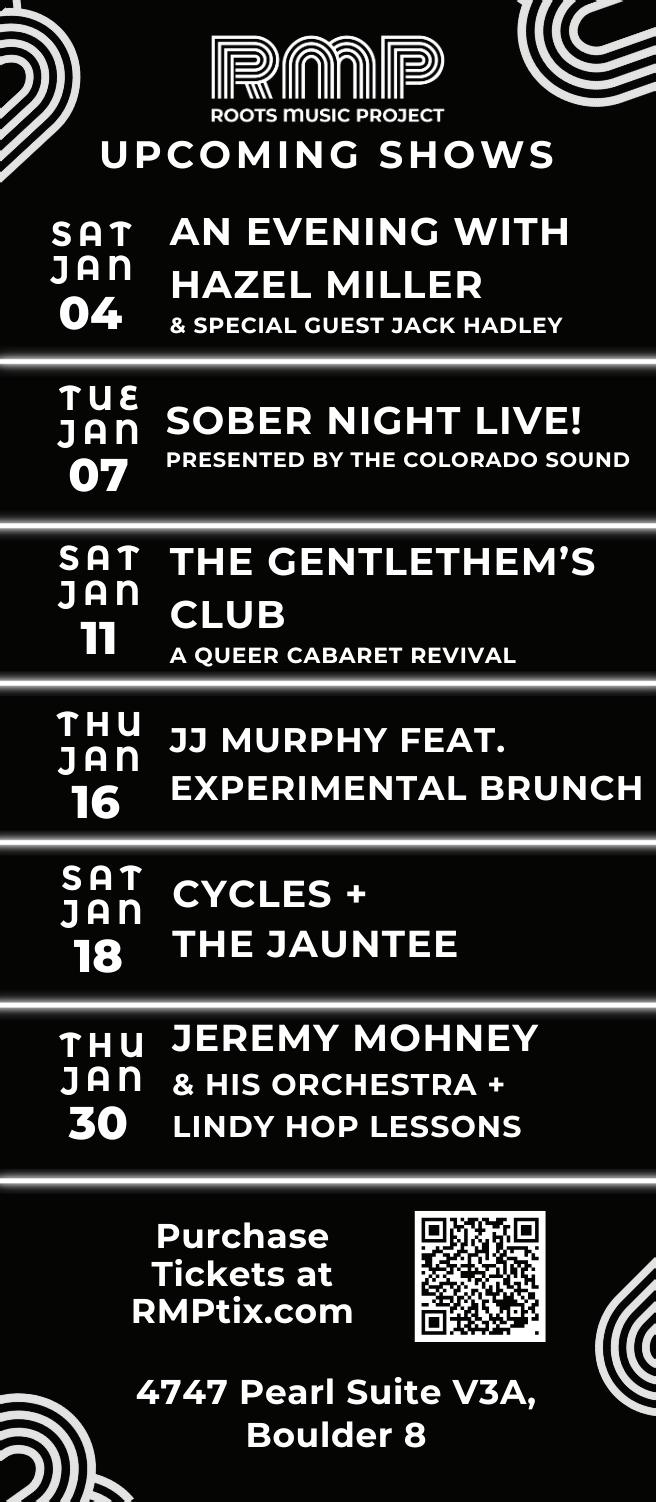



Want more Boulder County events? Check out the complete listings online by scanning this QR code.


BY DAN SAVAGE
Dear Readers: I’m away this week. Please enjoy this infamous column from the first decade of Savage Love. – Dan
As an avid reader of your column, I thought of you and only you for help with this problem. My grandmother, 78 and widowed, is a kind, generous woman who has seen her share of difficult times. She is a bit offbeat, but extremely conservative and religious. After my grandfather passed on, she purchased a lively little parakeet and named him Pretty Baby.
Pretty Baby has provided wonderful companionship and entertainment for my grandmother, even learning to speak to her. Pretty is an amazing mimic, repeating phrases she has taught him: “I love you,” “lock the door,” “give me kisses,” etc. The problem is the kissing... or what I recently witnessed the kissing leads to.
One evening, Pretty began to squawk “give me kisses, give me kisses” and my grandmother walked over to the cage and slipped one finger between the bars. Pretty Baby proceeded to “kiss” her fingernail and flutter about. Then my grandmother — my grandmother! — purred, “Give Grandma lovin’, Pretty Baby, give Grandma lovin’.” She then turned to me and said, “Pretty Baby wants to give me lovin’ and he won’t quiet down until he does.”
Pretty Baby proceeded to screech more and more loudly, as he humped my grandmother’s finger. She also moved it back and forth for him. I was stunned and unsure of what was happening, so I sat quietly in my chair looking in the opposite direction, hoping I wasn’t really witnessing what I thought I was. My grandmother cleared things up quickly, saying, “He’ll calm down after he climaxes,” smiling away and continuing to repeat, “Give me your lovin’, Pretty Baby, give me your lovin’.” When Pretty Baby was finished, she looked back at me and said, “I better wash my hands!” I left minutes later, unable to process what had just happened. Grandmother, however, never flinched, acting like it was an everyday occurrence.
I’m still horrified. Should I be concerned, Dan? About my grandmother? About Pretty Baby? Help!
– Polly Wanna Wanker
I’ve been doing this job for a while now, PWW, and rarely do I get a question about a subject, sex act, position, kink or bodily fluid that I’ve never had the pleasure of addressing before. But your question, PWW, is a first. And a treat! A grandmother whacking off her pet parakeet? That’s the kind of question I live for! I almost hate to admit it — I don’t want you to think I’m as sick a
mother owns a parakeet, and her grandmother is one sick fuck.
“Birds often begin to exhibit mating behavior when they reach sexual maturity,” said Pierre Brooks, who owns 33rd & Bird, a bird shop in New York City, and agreed to discuss this delicate issue with me. “For a singly kept pet bird, this can include attempts at mating with one of their toys or perches.” How
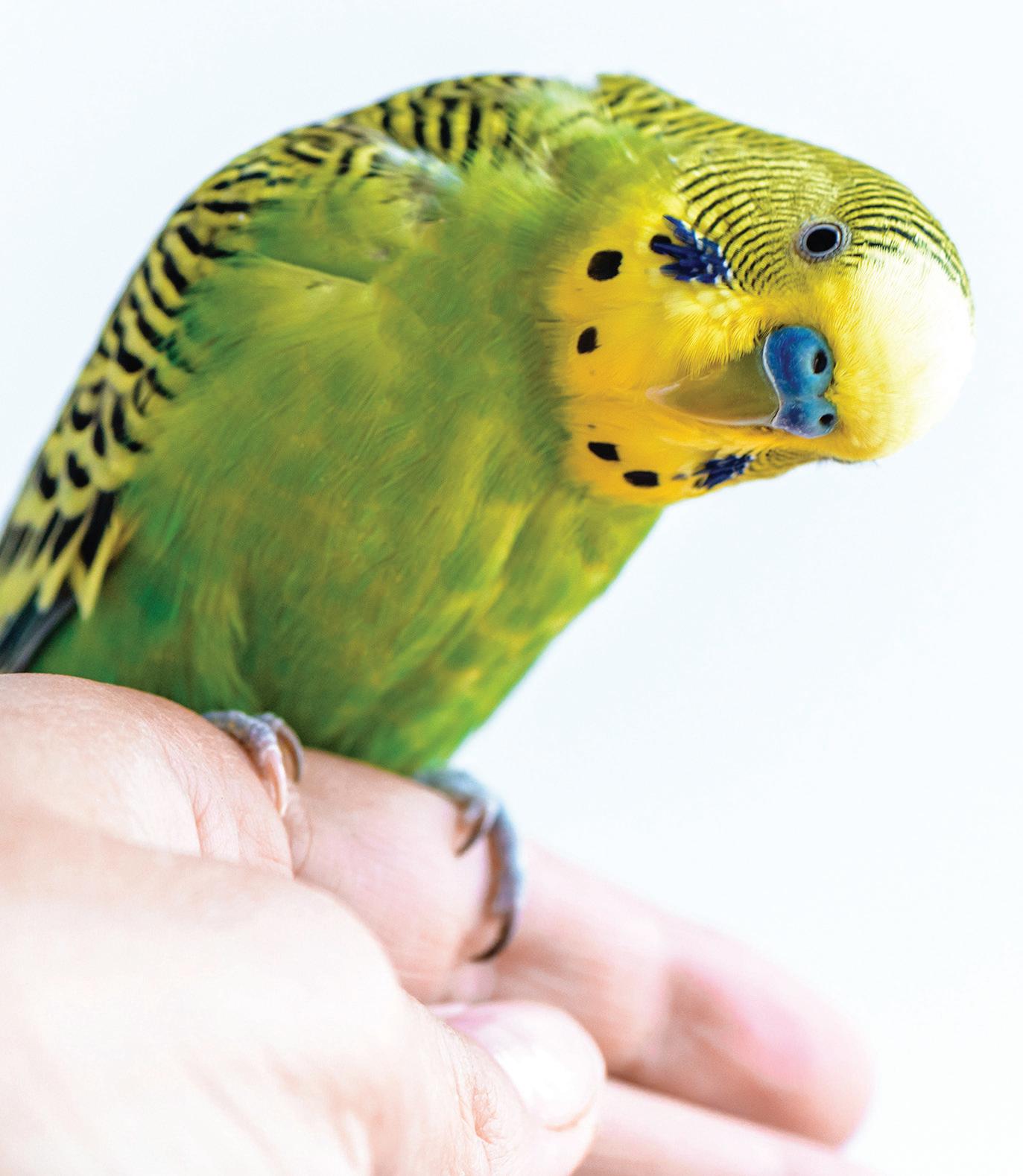
fuck as your grandmother is — but I was thrilled to receive your letter. Thrilled!
I was also suspicious. Could PWW be making this up? Did this grandma exist? Can you actually beat off a parakeet? Before I sought out some guest experts to address the whole beatingoff-a-parakeet issue, I wrote back to PWW personally and demanded more background info. After speaking with PWW I can confidently assure my other readers that, yes, PWW exists, her grandmother exists, her grand-
about the little old lady that owns ‘em?
“We have not come across an owner who becomes the bird’s surrogate mate, but it is not unrealistic.”
But is it healthy? Is it good for the bird? Is it good for Grandma?
“If this were one of our customers, we would advise the customer that the bird may be lonely and suggest introducing another parakeet for companionship,” said Brooks. “However, this may not solve the problem. Birds are similar to humans: They are selective about their mates. Simply putting a male and
female bird together does not guarantee that they will like one another, let alone breed.”
As much as you may want to tell your grandmother she’s a sick fuck and she’s got to stop beating off the bird, that might not be in the bird’s best interest. “A bird [can] feel lonely and sexually frustrated if its mate is taken away,” Brooks added.
And like it or not, PWW, your grandmother is Pretty Baby’s mate now.
Seeking a second opinion, I spoke with Jesse B., who owns Ford’s Feathers in Torrance, California.
“When it comes to a bird, they can be stimulated by any object,” said Jesse B. “A toy, a perch. I haven’t heard of anyone masturbating their parakeet before.”
Did he think it was wrong?
“If she’s doing it because the bird wants it and she wants to make the bird feel better, that might be okay,” said Jesse B. “But if she’s doing it for selfpleasure or because it excites her? Then she’s got a problem.”
When it came to any long-term harm, Jesse B. agreed with Pierre that it’s not going to hurt the bird — or your grandmother.
“It’s good that the bird is male, though,” Jesse B. added. “You can induce the production of eggs in a female by stimulating her, and if they start releasing eggs, there’s always the risk of the bird becoming egg-bound, basically an egg stuck in the bird’s stomach, and that can kill the bird. But this is a male parakeet, so it’s not a problem.”
Not a problem unless, of course, you’re the poor grandchild who has to watch her widowed, generous, kind, conservative, religious grandmother finger-bang her parakeet. That can’t be easy.
But while I sympathize with your plight, PWW, I would urge you not to confront your dear ol’ gran. Even if she is “doing it for self-pleasure,” as Jesse B. and everyone else reading this hopes she’s not, your grandmother probably isn’t long for this world. Besides visits from her grandchildren, she probably doesn’t have much in her life to distract her from impending death… so let’s not take this small pleasure, however sick and twisted it might be, away from this
sad old lady. Your grandma isn’t hurting the bird and she’s not hurting herself, and it’s not like she’s going to turn into a bird molester and start jumping on pigeons in parks. Why say anything that might make the old broad feel self-conscious about what she’s been up to with Pretty Baby?
So, keep your mouth shut, PWW, and just pray grandma doesn’t leave you that bird in her will.
Dear Readers: I got an update from the Polly Wanna Wanker a few years ago. Still an avid reader of Savage Love, she wanted to let me know she took my advice: she never said anything to her grandmother, who passed away a few years after her letter appeared in my column. I don’t recall what became of the bird. (If you’re still out there reading, PWW, please jump into the comments thread!)
I just had to write in after reading about the two gay penguins who adopted a chick. Loved that story! I had two pet female ducks who fell in love and used to try to mate all the time. They’d perform all the ritual courtship head-bobbing, and then one would lower herself to the ground and the other would climb on top. The behavior was exactly the same as the mating behavior between male and female ducks.
So anyone who says animals don’t engage in homosexuality is just plain ignorant. It’s been documented time and time again.
– Lesbian Duck Mom
Thanks for sharing, LDM, and for sending in a note that works so well with the “feathered friend” theme of this week’s column — it’s also nice that it’s a story about birds mating with birds, as God intended.
BW staff- recommended read:
“Sphen, Penguin Whose Gay Love Story Earned Global Fame, Dies” by Isabella Kwai, New York Times
Got problems? Yes, you do! Email your question for the column to mailbox@savage.love or record your question for the Savage Lovecast at savage.love/askdan. Podcasts, columns and more at Savage.Love
ARIES (MARCH 21-APRIL 19): There are experiences, people and places that can either be good for you or bad for you. Which way they tilt at any particular time may depend on your mood or their mood or forces beyond your immediate control. An example for me is social media. Sometimes it’s a mediocre drug that dulls my sensibilities and aggravates my fears. On other occasions, it brings rich new connections and teaches me lessons I’m thrilled to learn. What about you, Aries? In my astrological view, 2025 will be a time when you will be wise to re-evaluate and redefine your relationships with these paradoxical resources. If there are some whose influence is far more likely to be bad than good, consider ending your bond. For those that are equally bad and good, do what you can do to enhance the goodness.
TAURUS (APRIL 20-MAY 20): Taurus supermodel Linda Evangelista has supreme levels of self-esteem. At the height of her career, she bragged that she got out of bed each morning with the intention of earning no less than $10,000 in the coming day. I’m not advocating that you be equally audacious in your expectations during 2025, dear Taurus. But it’s reasonable for you to adopt at least a measure of Evangelista’s financial confidence. According to my analysis of your destiny, cosmic rhythms will be conspiring to open up economic opportunities for you.
GEMINI (MAY 21-JUNE 20): In 2025, dear Gemini, I invite you to make ample use of at least five of the following 11 tactics: 1. Shatter the molds. 2. Defy the conventions. 3. Challenge the norms. 4. Redefine the boundaries. 5. Disrupt the status quo. 6. Defy old rules and create new ones. 7. Go against the flow and against the grain. 8. Bushwhack through frontiers. 9. Dance to unfamiliar rhythms. 10. Search for curious treasures. 11. Change the way you change.
CANCER (JUNE 21-JULY 22): Good advice for the first half of 2025: 1. Lose your respect for tangled complications that have begun to rot. 2. Keep some of your necessary protective defenses, yes, but shed those that no longer serve you and are weighing you down. 3. Bury a broken-down dream to make room in your heart for a sweet new dream. 4. Scour away as much resentment as you can. 5. Sneak away from people and situations that are far too demanding. 6. Discard as much as you can of what’s inessential, unhelpful, and defunct. 7. Don’t make a radical break for freedom yet, but begin plotting to do so by your birthday.
LEO (JULY 23-AUG. 22): The coming months will be an excellent time to dream up bigger, better, more original sins and seek out wilder, wetter, more interesting problems. You should experiment with being naughty and even sweetly wicked as you uplift your spirit and deepen your love for life. You are being invited by your future self to experiment with daring departures from tradition that bring you exciting challenges. Dear Leo, my wish for you in 2025 is that you will be cheerfully courageous (not belligerently courageous) as you become both smarter and wiser than you have ever been before.
VIRGO (AUG. 23-SEPT. 22): Aztecs were originally known as the Mēxihcah people. Before they forged an empire, they were semi-nomadic tribes. But even then, early on, they were guided by a prophecy that they would eventually settle permanently in a place where they found an eagle roosting on a cactus holding a snake in its talons. In 1325, wanderers spied this precise scenario on a small island in Lake Texcoco. Soon they began to construct the city of Tenochtitlan, the capital of their future kingdom. I bring this true myth to your attention, Virgo, because I want to invite you to formulate a similar prophecy in 2025 — and then fulfill it. Your personal empire is primed for expansion and consolidation.
LIBRA (SEPT. 23-OCT. 22): As 2025 unfolds, your burdens will grow lighter, and your duties will become more interesting. Joyless missions and trivial hopes will be increasingly irrelevant and easy to relinquish, opening up opportunities for fresh assignments that motivate you to play more and to work smarter rather than harder. During the coming months, dear Libra, I predict you will be basking in extra good karma and tapping into more fertile mojo than you have in a long time. Would you like more freedom than ever before? It’s yours for the plucking.
SCORPIO (OCT. 23-NOV. 21): Painter P. K. Mahanandia is well-known because of his fine art. He is even more famous for an amazing adventure he had in the name of love. It’s a long story, but his wife was living in her native Sweden while he was stuck in his native India. Mahanandia was still at an early stage of his career and couldn’t afford to fly by plane. Instead, he bought a used bicycle and headed west, covering about 27 miles per day. He pedaled through Afghanistan, Iran and Turkey until he arrived in Europe 127 days later. He raised money by drawing portraits of people he met along the way, so he had enough to travel by train the rest of the way to Sweden. I’m thinking you may have an epic romantic adventure yourself in 2025, Scorpio. Maybe not quite as extreme, but very interesting.
BY ROB BREZSNY
SAGITTARIUS (NOV. 22-DEC. 21): To symbolize your destiny in 2025, I drew a Tarot card. It was the 9 of Cups. Here’s my four-part interpretation: 1. Sometime soon, you should identify your top desires and ruminate about how to express them in the most beautiful and fulfilling ways possible. 2. Take a vow that you will shed half-hearted, insecure approaches for bringing them to fruition. 3. Be uninhibited about seeking not just a partial but a complete version of each fulfillment. 4. Figure out which allies you will need in your life to manifest the happiest and most meaningful outcomes.
CAPRICORN (DEC. 22-JAN. 19): You’re the most pragmatic sign of the zodiac and are most highly skilled at getting constructive things done. It’s also true that you thrive on organizing the chaotic details of our messy world into smooth-functioning systems. But I periodically need to remind you that these superpowers of yours require you to nurture a vigorous and rigorous imagination. All of what you ultimately accomplish originates in the fantasy realm. This will be especially crucial for you to keep in mind during 2025.
AQUARIUS (JAN. 20-FEB. 18): Mona Lisa is a world-famous painting by Leonardo da Vinci. Beneath its visible surface is evidence that the artist reworked it extensively. There are at least three earlier versions with different facial features. In one, the figure has eyebrows and is wearing hairpins and a headdress. These details were scrubbed out of the image that now hangs in the Louvre Museum in Paris. I bring this to your attention, Aquarius, because I suspect you have been engaged in a comparable process as you have worked on your labor of love. In my reckoning, you’re finished with your false starts, practice runs and dress rehearsals. In the coming months, you can make excellent progress toward ripening and culminating your creation.
PISCES (FEB. 19-MARCH 20): Ancient Greek literature references a drug called nepenthe. Anyone who ingested it would forget memories that stirred pain and sorrow. Many of us modern people might consider taking such medicine if it were available. But let’s imagine a very different potion: one that arouses vivid memories of all the wonderful experiences we have been blessed with. If there were such a thing, I would recommend that you sample it frequently in the months to come. That’s because your relationship with the good parts of your past will be especially useful and inspirational. In fact, drawing on their power will be instrumental in helping you create your best possible future.


BY JOHN LEHNDORFF
Let’s face it: 2024 was a pretty scary year — and that was just the politics. In the culinary multiverse, there’s a buffet of news about food, restaurants and culinary technologies coming in 2025 — some terrifying, some hopeful.






Sea squirt burger with fries: Pronofa Asa, a Scandinavian company, is preparing to market a ground meat substitute made from ciona, more commonly called sea squirts. The Guardian reports: “Burping and bubbling in the freezing waters of the North Sea, sea squirts are translucent tubes that resemble gelatinous sacs.”
Sad sandwich sign: J.M. Smucker has opened its third Uncrustables plant in McCalla, Ala. — another is located near Longmont. The company’s goal is to sell $1 billion in frozen sandwiches in the coming year. Remedial PB&J classes are needed.



Body shaming Poppin’ Fresh: Expect social media protests from traditionalists this year when they get a look at General Mills’ revamped Pillsbury Doughboy. Formerly plump Poppin’ Fresh will reportedly be slimmer with longer legs, more defined eyes and a blue tie.
Does he inject Wegovy every week?












After a brief retirement, Poppin’ Fresh will reportedly return with a slimmer bod. Courtesy: Pillsbury
Those anchovy people: According to a 2024 Harris/ Instacart poll, the list of foods Americans hate is topped by anchovies, followed by black licorice, oysters, beets, blue cheese, okra, capers, brussels sprouts, fennel and olives. About 37% of Americans — Democrats, Republicans and independents — say they have food preferences they consider to be controversial.
According to a 2024 Harris/ foods Americans hate is — say they have food prefer-
Grilling will be less thrilling: According to The Hartman Group’s


U.S. Grocery Shopper Trends survey, 36% of U.S. consumers ate less outdoors in 2024. About 20% say they will be grilling less in the future due to extreme summer temperatures.
Safe feeling in produce? Restaurant Business reports that Walmart is testing police-like body cameras for door-checkers at its stores to record escalating confrontations.
Watch out for your feet: Seoul University of Science and Technology researchers are reportedly developing Palletrone, a shopping cart drone. The rotors are set in a protective cage. Noise is an issue.

Pinterest’s reports that popular searches in 2024 included “rat cake” (up 170%) and “pickle cake” (up 45%). Meanwhile, Grubhub reports that delivery orders involving pickles increased 14%. For 2025’s food trend predictions, Yelp searches last year increased for “mushroom drink” (501%) and “cookie flights” (384%).
• The National Restaurant Association’s What’s Hot Culinary Forecast for 2025 includes Korean cuisine, hot honey, Vietnamese cuisine, hyper-local beer and wine, fermented/pickled foods, and wellness drinks.
• Datassential’s 2025 Food, Flavor, and Beverage Trends predict that foods from Haiti, Peru, China, Japan and Italy will be hot. Look for sweet drop peppers from Peru, pikliz from Haiti, and Japanese bonito flakes.
• Finally, the Pantone Color Institute color of the year for 2025 is “Mocha Mousse.”
• Boulder’s New Hope Communications’ 2025 predictions include the rise of water-less, waste-less food formats like plant milk “sheets” and concentrates.
• Starting Jan. 1, all eggs sold in Colorado must be from a cage-free facility if the farm has more than 3,000 egg-laying hens.
• California has passed a law requiring “Best If Used By” and “Use By” dates on packaged food and prohibits misleading and wasteful “Sell By” labels starting in 2026.
• ChefWorks new sustainable chef coats made from cotton and recycled polyester are credited with diverting more


than 570,000 water bottles from landfills in three months.
• Westfalia Fruit is replacing plastic PLU stickers on mangoes with laser-etched labels, potentially reducing plastic use by 10 million stickers.

In 2024, NASA shared a photo of astronauts assembling a poor excuse for a pizza aboard the International Space Station. In coming years, the inhabitants may be able to enjoy an actual baked pizza in space using SATED, a new zero gravity cooking appliance developed in Boulder by scientist Jim Sears. SATED stands for Safe Appliance, Tidy, Efficient & Delicious.
Nasa.gov reports that tomatoes and chile peppers are among the vegetables already known to grow well on the International Space Station.
Boulder-based Escoffier School of Culinary Arts looked at restaurant technology trends and how we relate to them according to generation.
• 64% of Americans prefer tech-free dining
• 21% — especially Millennials and Gen Z — would patronize restaurants with sustainable practices;
• 70% of Gen Z and 84% of Millennials are likely to use pre-ordering apps;
• 58% of Millennials would order from robots.
The following robots are in operation or in development:
Autocado: An avocado-processing machine being adopted by Chipotle.
Robo Pal: A chicken-cooking robot working at 101 Chicken, Fort Lee, N.J.
Sara: An AI-powered bartend-tron at the Wyndham Orlando Resort who can make 20 drinks per hour, verify ages and handle payments.
Bo-Linda: An AI voice system who takes drive-thru orders at 200 Bojangles locations.
NapSpin: A robot developed by a Northeastern University graduate, who automates rolling silverware into napkins (and deprives waitstaff of a legitimate reason to sit down at work).
Robots with no name: To date, Whataburger’s facial recognition payment system, Instacart’s AI Caper Carts with cameras and sensors, and the Shake Shack/Uber Eats autonomous delivery robots in Los Angeles remain nameless.
“People who consume a steady diet of bucket lists and viral videos rush from one restaurant to another so they can post about it… most of these people will never return.”
– From the final column by New York Times dining critic Pete Wells
John Lehndorff host Radio Nibbles and Kitchen Table Talk Thursdays on KGNU. Podcasts: kgnu.org/category/radio-nibbles









Promising medication could be on the way for Americans with alcohol use disorder
BY JOSEPH P. SCHACHT, THE CONVERSATION
More than 29.5 million Americans ages 12 and up had alcohol use disorder — the medical term for the disease commonly known as alcoholism — in 2022, when the most recent national data was published. Deaths from excessive alcohol use have sharply increased in recent years, to 178,000 in the United States in 2021, up from 138,000 five years earlier. The greatest increase occurred during the first year of the COVID-19 pandemic.
Alcohol is responsible for more deaths than overdoses from opioids and all other substances combined, and it accounts for 1 in 5 of all deaths of people ages 20 to 49.Alcohol-associated deaths occur from a variety of causes. These include alcohol’s long-term effects such as cancer, liver disease and heart disease as well as its short-term effects such as motor vehicle accidents, poisoning and suicide.
Many effective treatments exist for alcohol use disorder, including psychotherapy, peer support groups such as Alcoholics Anonymous and SMART Recovery, and medications.
With the onset of the opioid epidemic in the past two decades, medications for opioid use disorder, such as methadone and buprenorphine, have entered the public consciousness. But medications for
alcohol use disorder are less familiar to the public and used less frequently.
While 22% of patients with opioid use disorder receive medications to treat it, the rate of medication treatment for alcohol use disorder is much lower. Less than 10% of people with alcohol use disorder receive any treatment in any year, and less than 3% receive medications for it.
As of May 2024, three medications have been approved by the Food and Drug Administration for treatment of alcohol use disorder. The oldest and best known of these medications is disulfiram, a compound that was first used in the American rubber industry.
In 1937, a rubber plant physician observed that workers exposed to disulfiram displayed adverse reactions to alcohol, including nausea, vomiting and tachycardia — meaning fast heart rate. Subsequent research determined that disulfiram inhibits alcohol metabolism, leading to the accumulation of acetaldehyde. This causes many of the symptoms of a hangover immediately after alcohol ingestion, making drinking unpleasant.
Disulfiram is effective for reducing



drinking but must be taken daily by mouth, which limits its utility if patients do not take it on this schedule.
A more recently FDA-approved and more effective medication for alcohol use disorder is the opioid receptor antagonist naltrexone. It blocks opioid receptors and prevents opioids — both “exogenous” opioid drugs and “endogenous” opioids produced in the brain — from activating these receptors.
Naltrexone reduces dopamine release from alcohol, blocking some of the pleasurable effects of drinking. Importantly, it also reduces alcohol craving, likely through its effects on dopamine that is
ing when taken sporadically prior to anticipated drinking occasions. A similar opioid antagonist, nalmefene, is approved in the European Union for alcohol use disorder.
The third FDA-approved medication, acamprosate, also reduces alcohol cravings, but its molecular effects are less well understood. Results from European clinical trials have shown that it can help people reduce their drinking, but results from U.S. trials have been less positive.










released in response to cues, such as the sight, smell and taste of alcohol. Naltrexone is effective for reducing heavy drinking but less effective for complete abstinence from alcohol.
Naltrexone can be taken daily by mouth or injected once per month, making it a better option for patients who might struggle to take a daily oral medication. Interestingly, it also reduces heavy drink-
The search for robustly effective medications to treat alcohol use disorder is a significant area of current research. The National Institute on Alcohol Abuse and Alcoholism funds a multisite research program that has evaluated a number of promising candidate medications in Phase 2 and Phase 3 clinical trials. The FDA typically requires medications to demonstrate efficacy in at least two Phase 3 trials prior to approval for a new purpose.
A resurgence of interest in psychedelic compounds in psychiatry has led to preliminary data suggesting that psilocybin, the active ingredient in hallucinogenic mushrooms, may reduce drinking when paired with psychotherapy.
Anecdotal reports of reduced interest in alcohol among patients taking GLP-1 agonists — medications that mimic the action of glucagonlike peptide 1 (GLP-1), a hormone produced by the body after eating — have prompted intense interest in the potential of these medications to treat alcohol use disorder.
Joseph P. Schacht is an associate professor of psychiatry, CU Anschutz.
































































































































































































































































































































































































